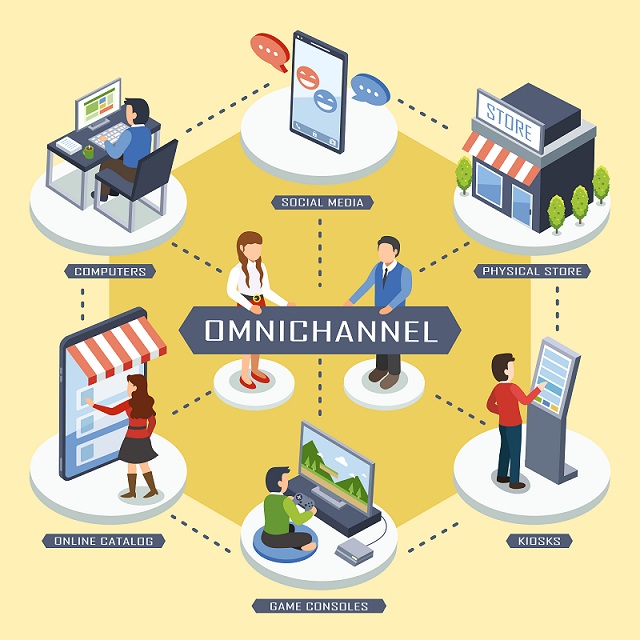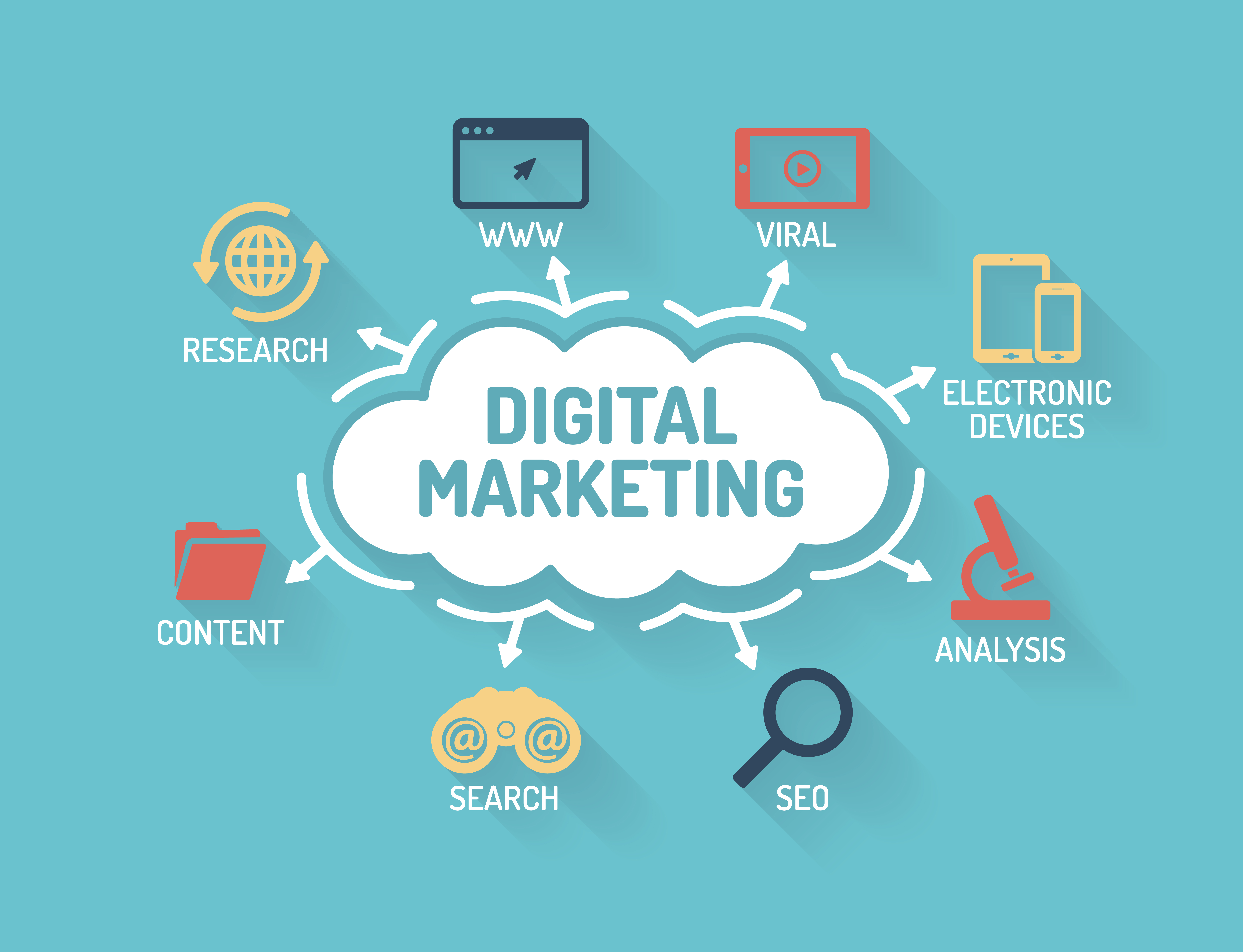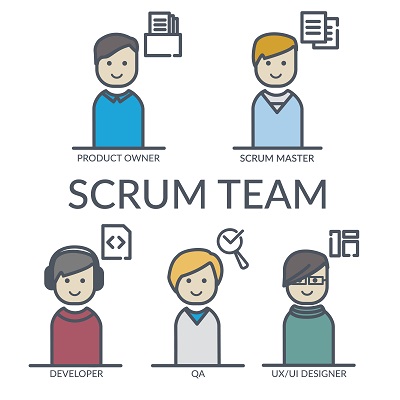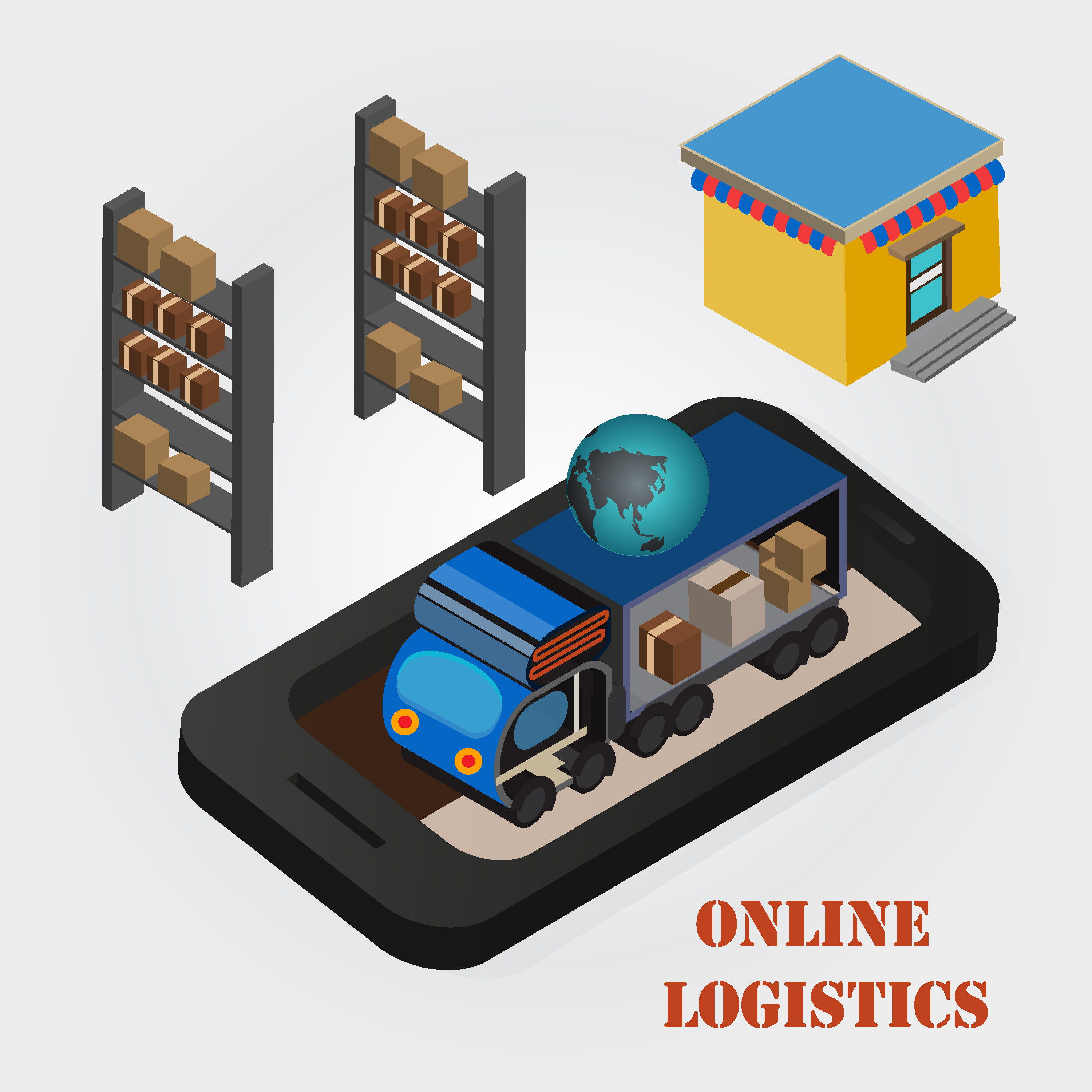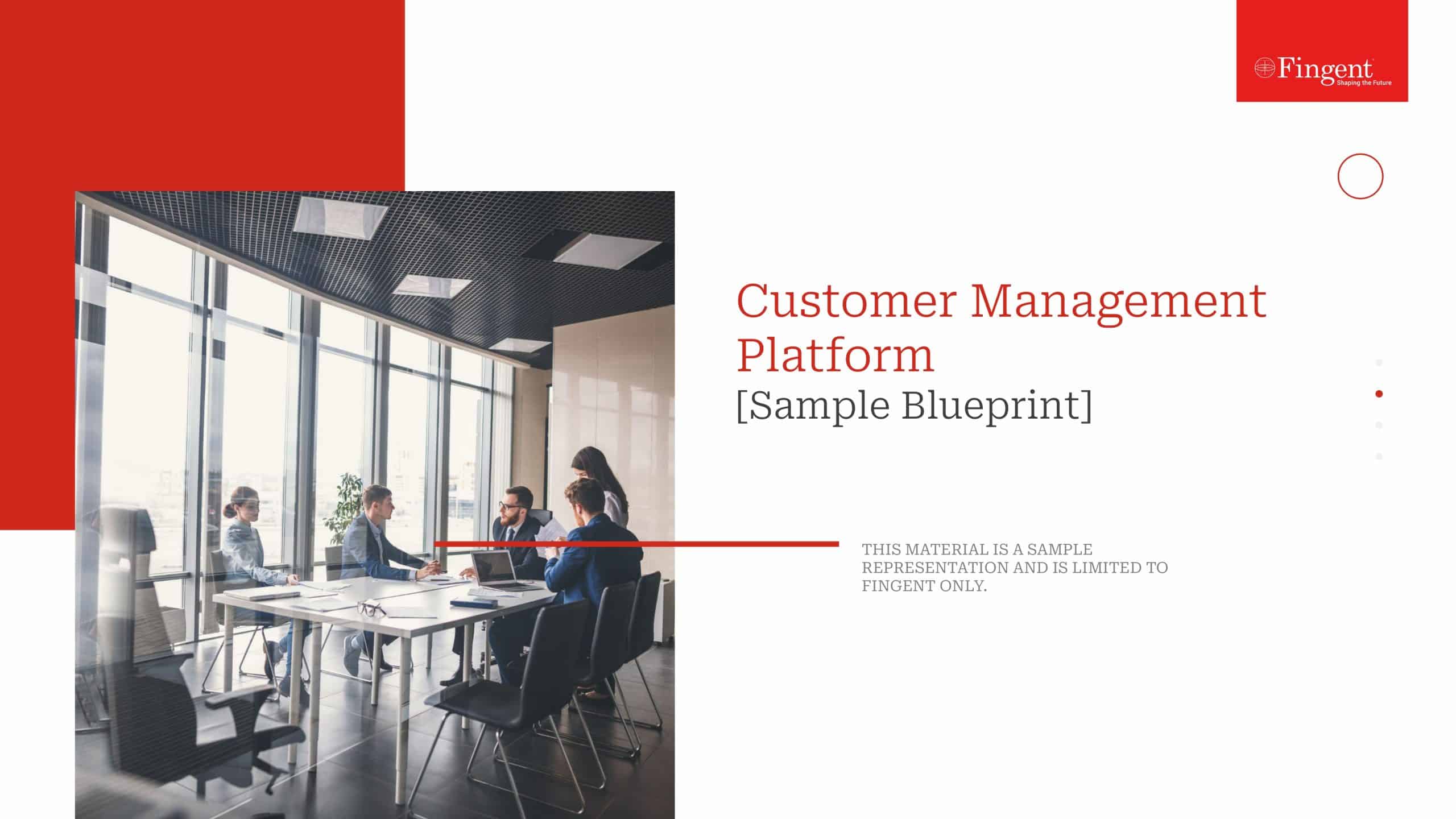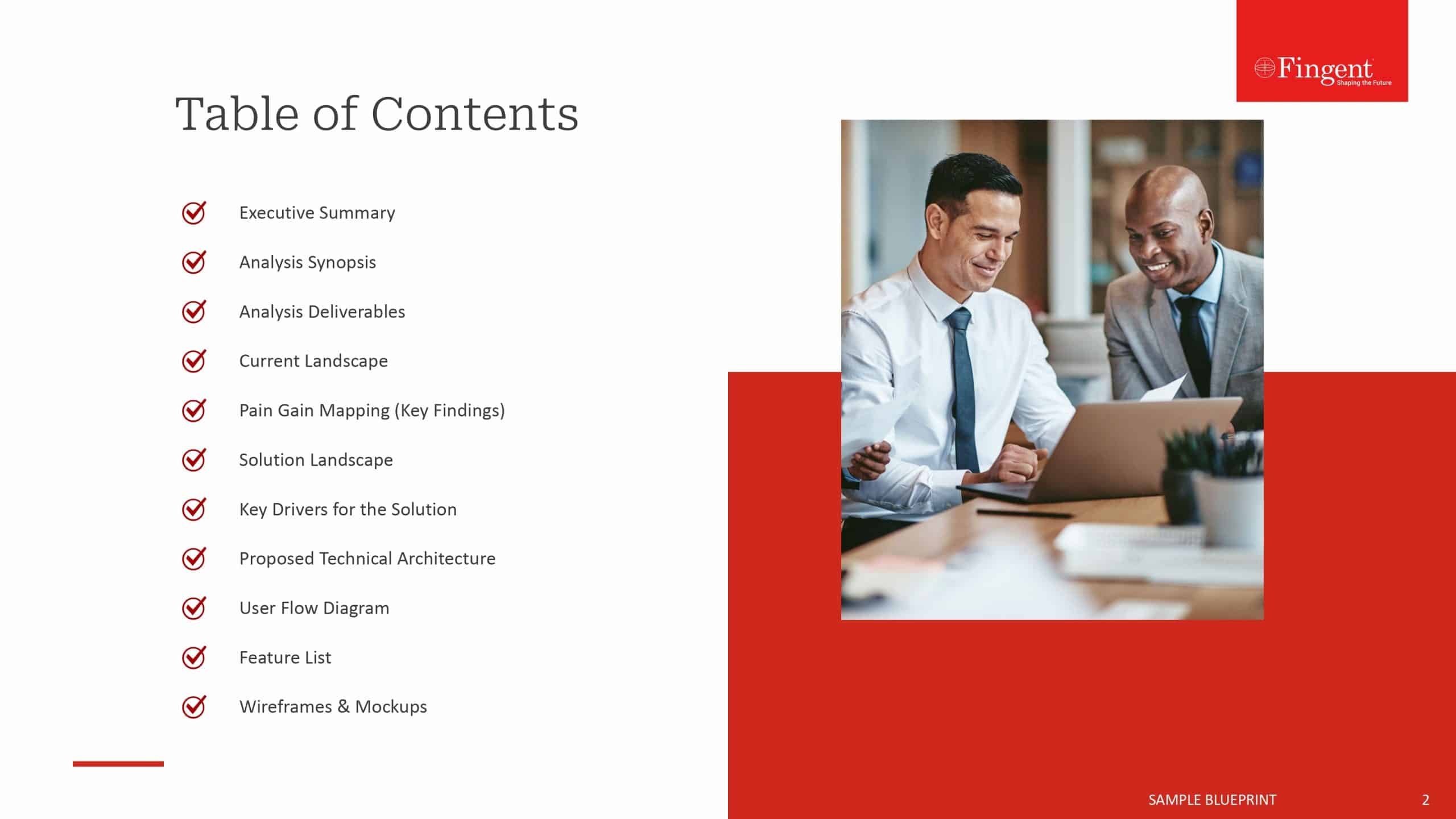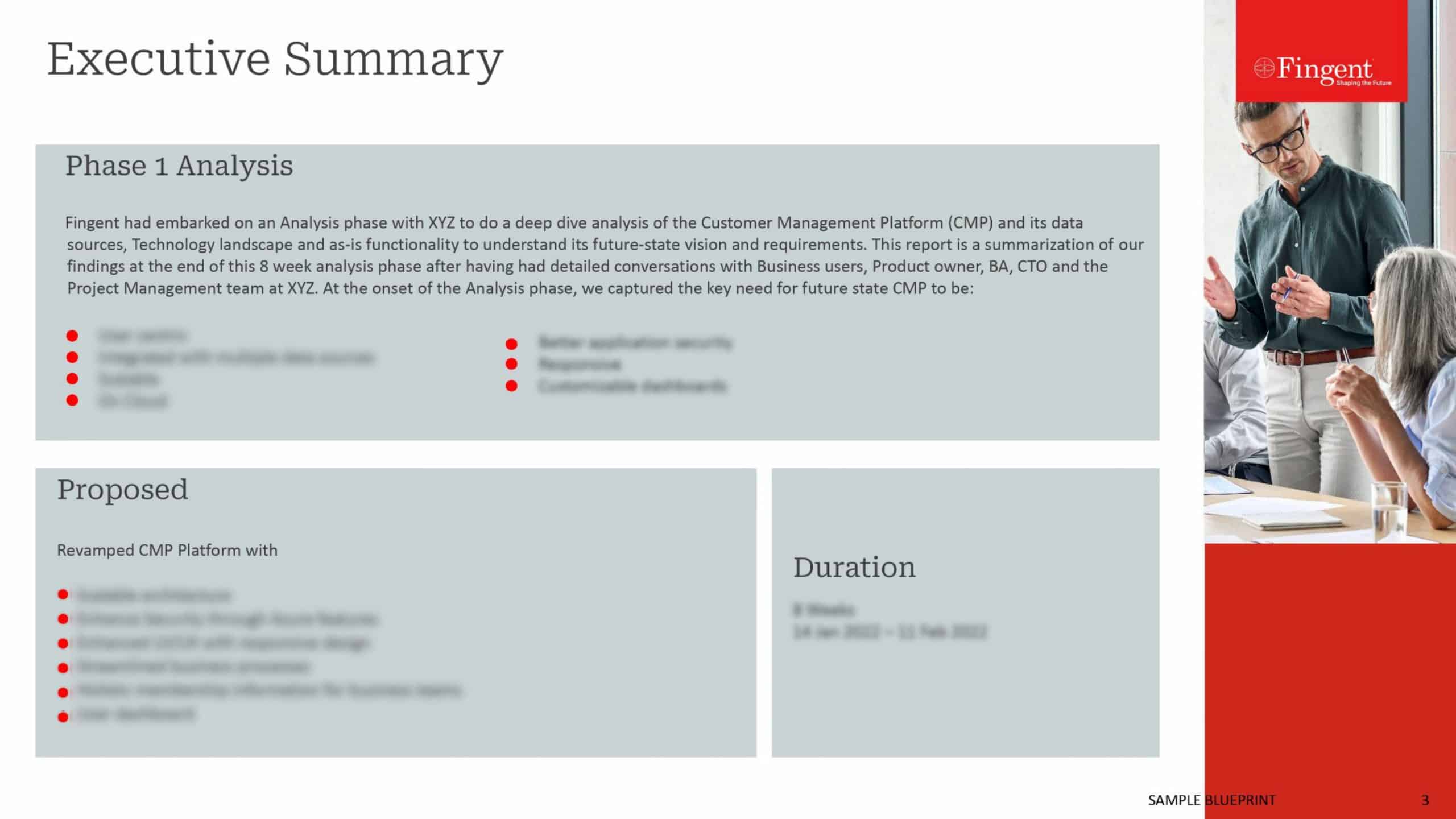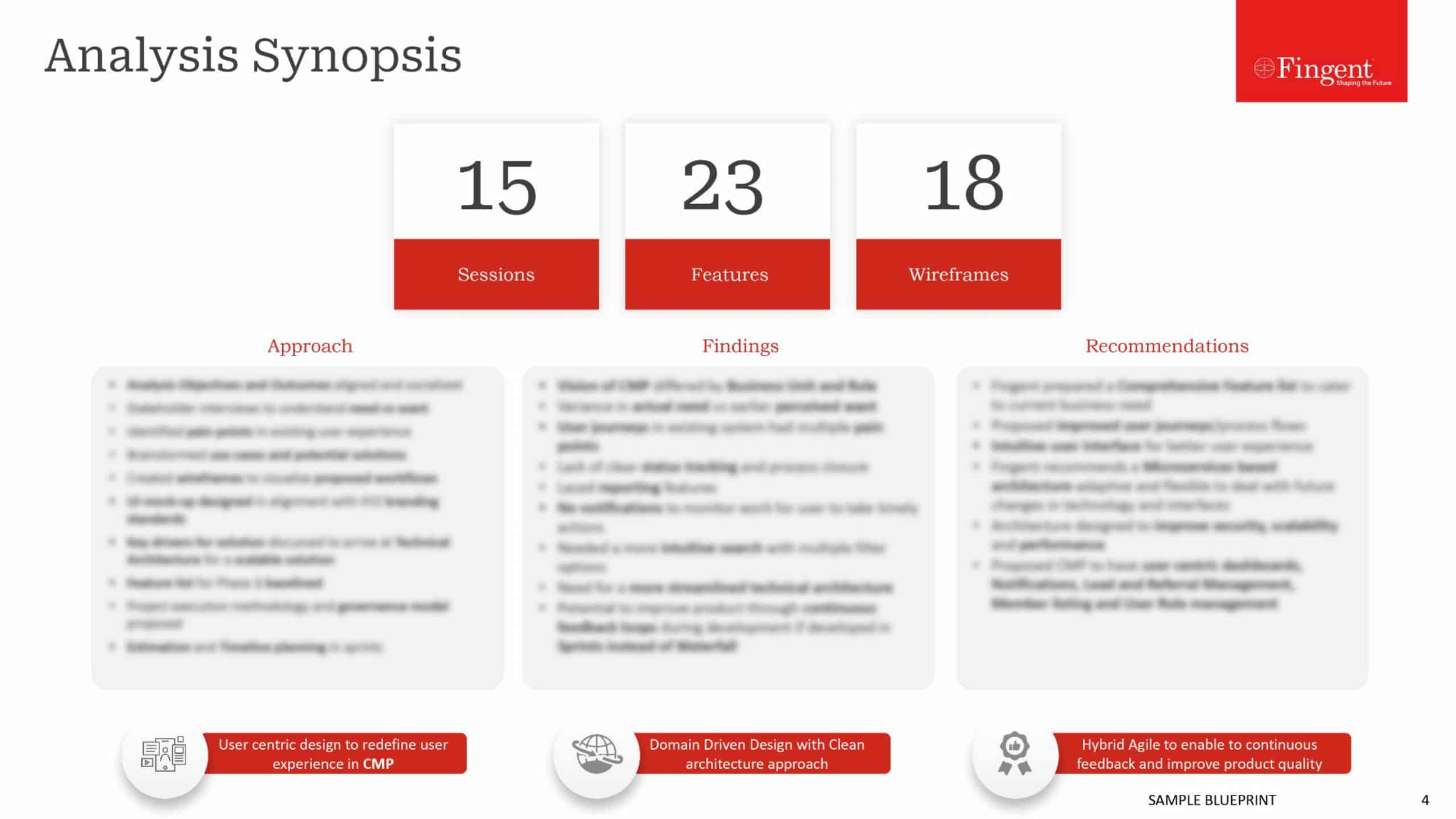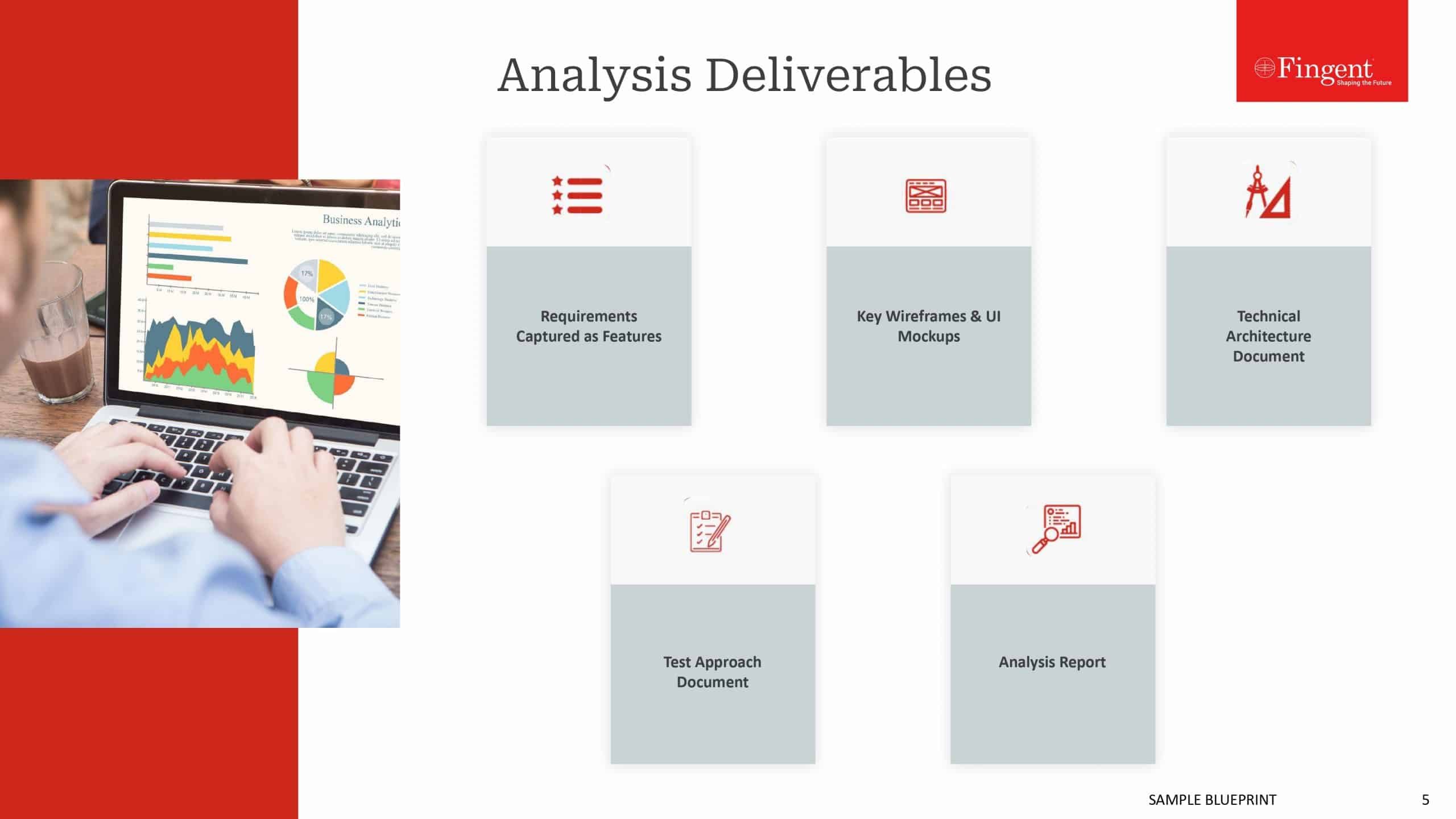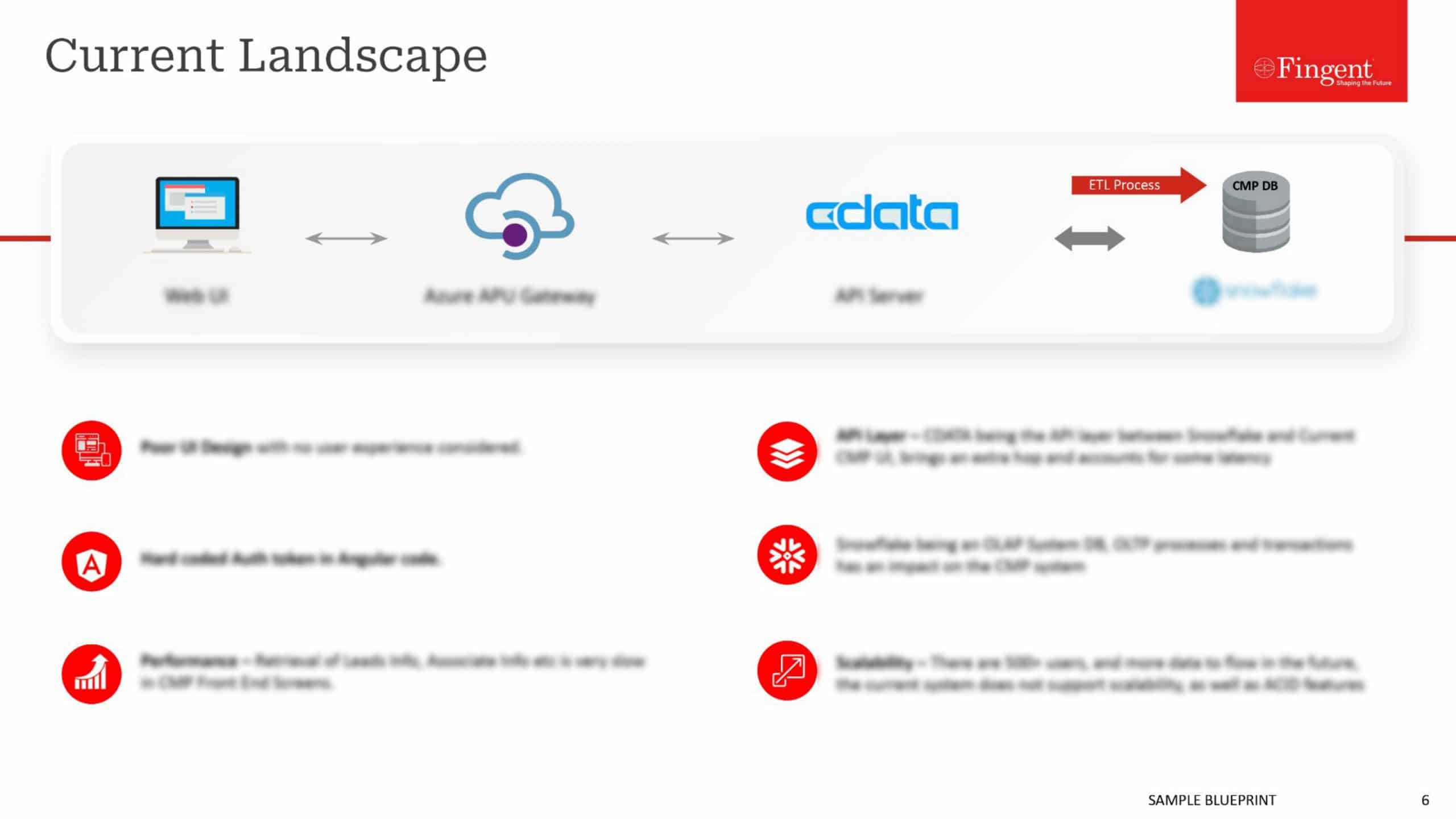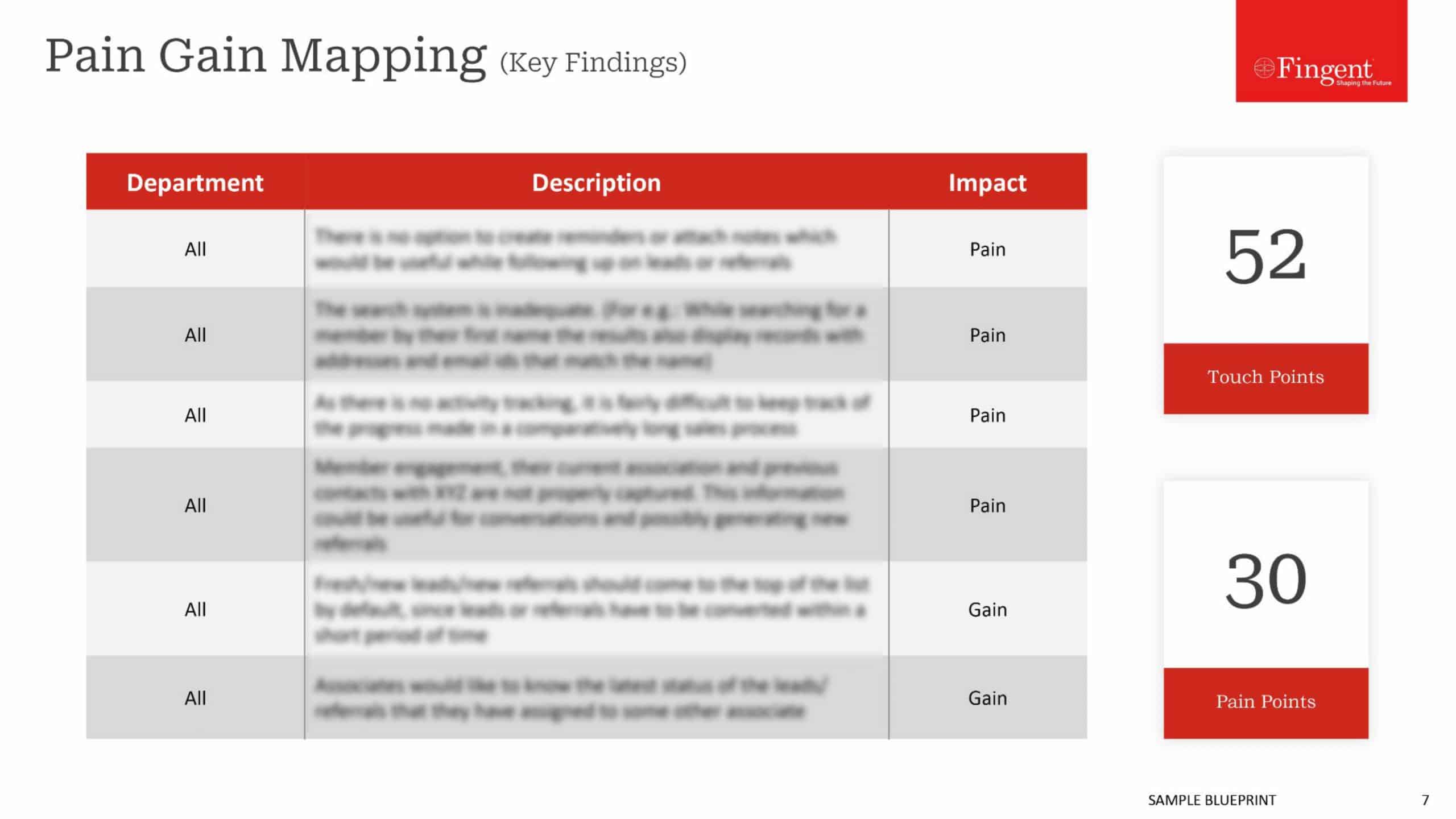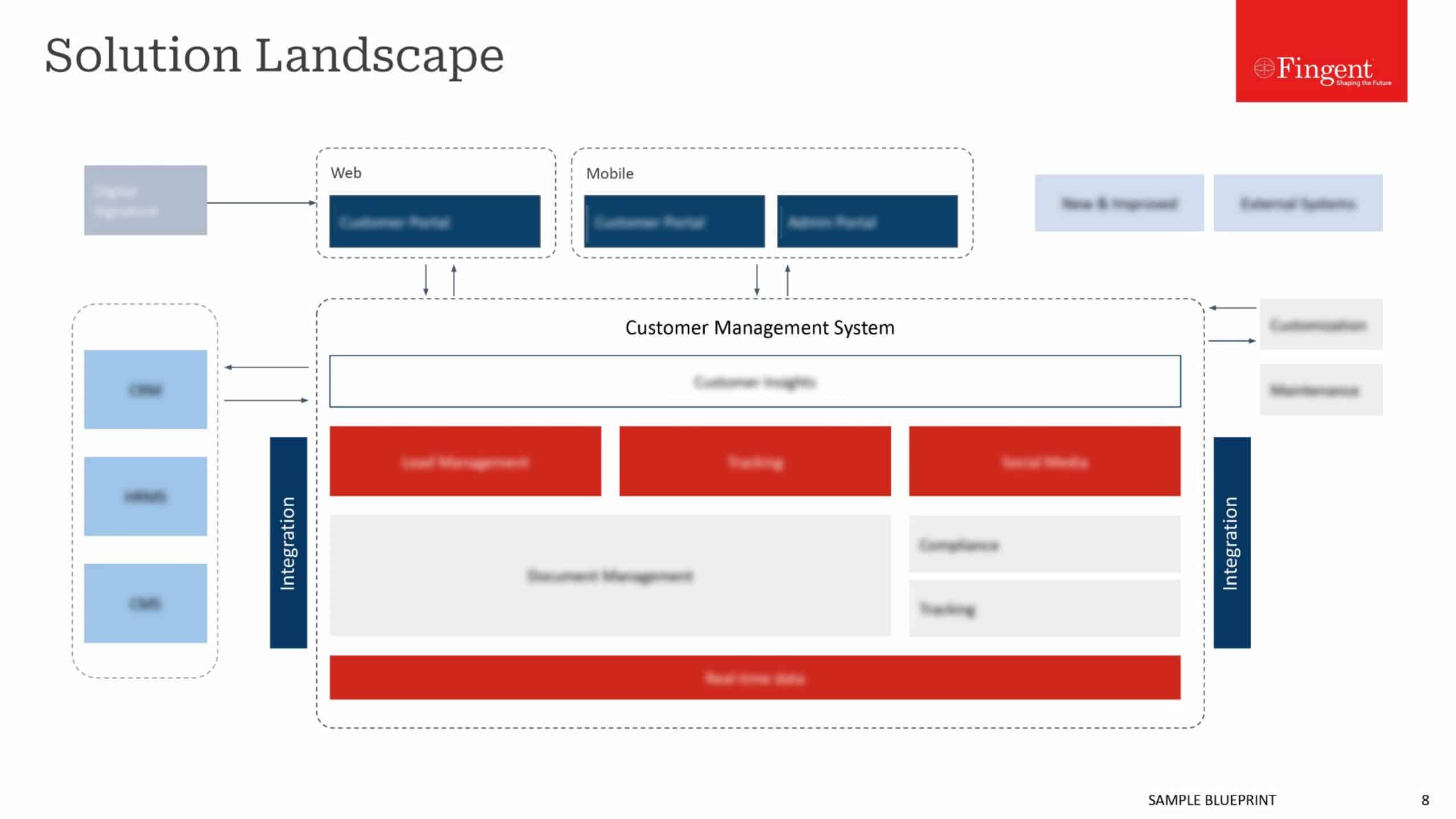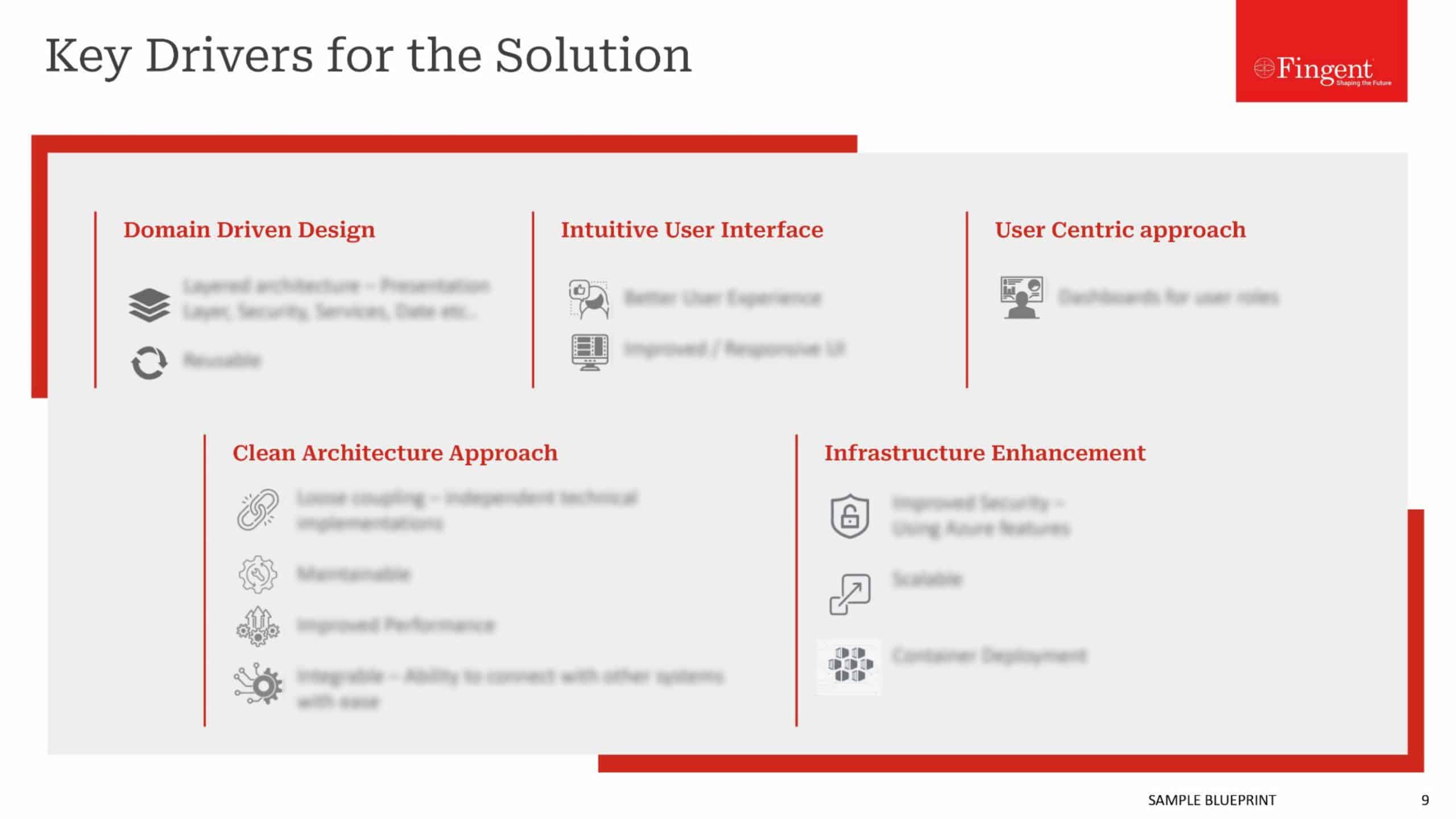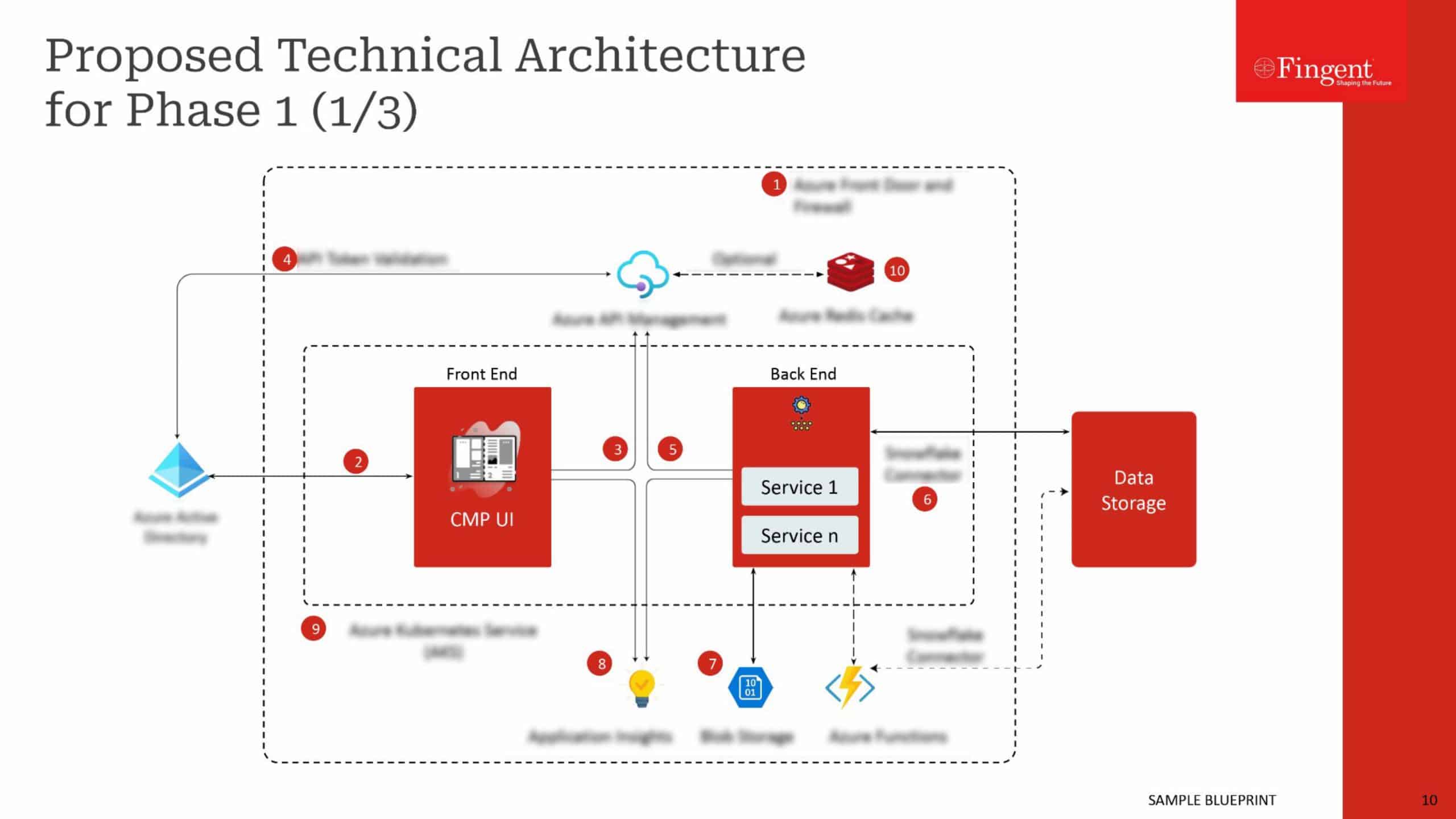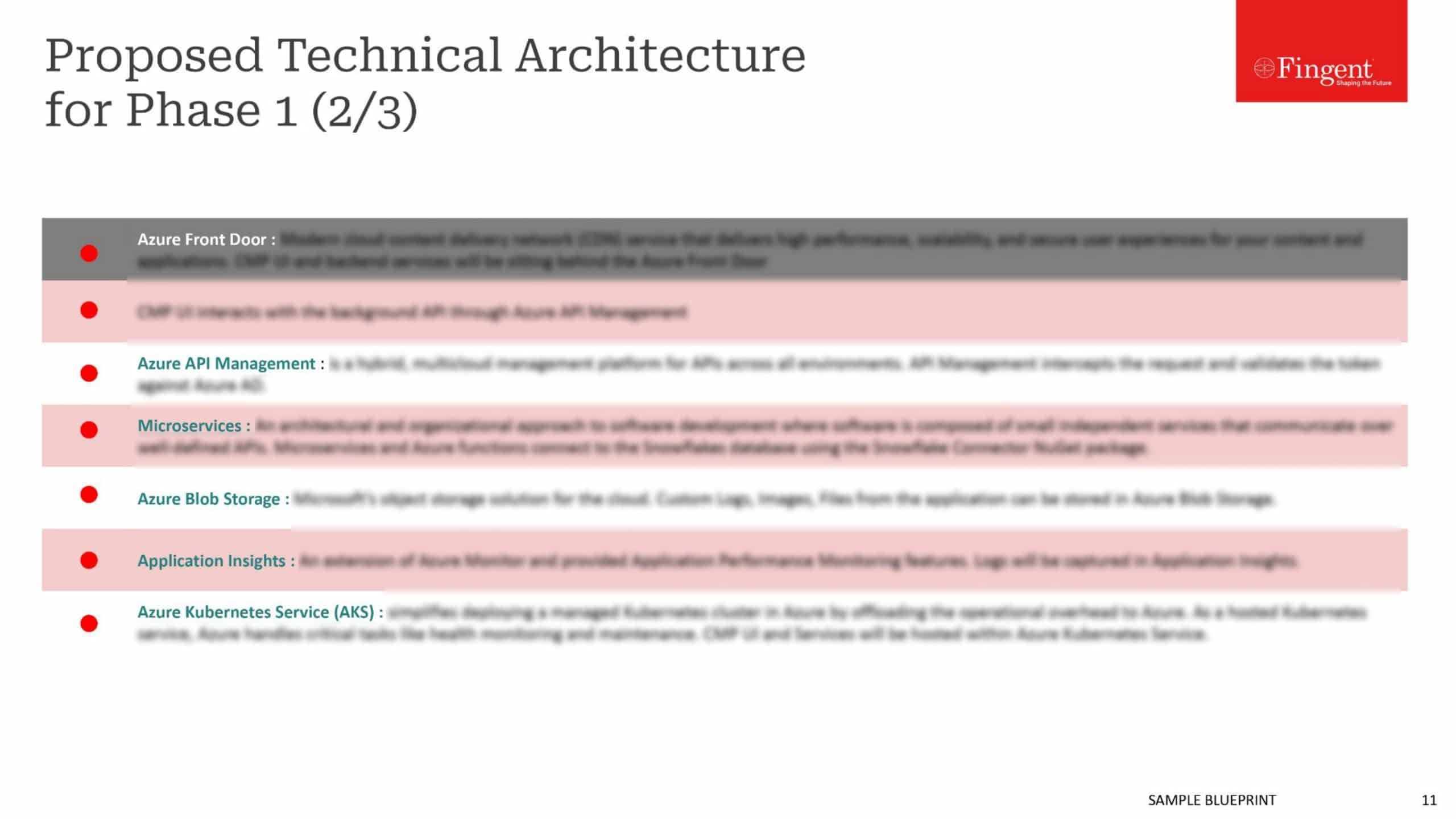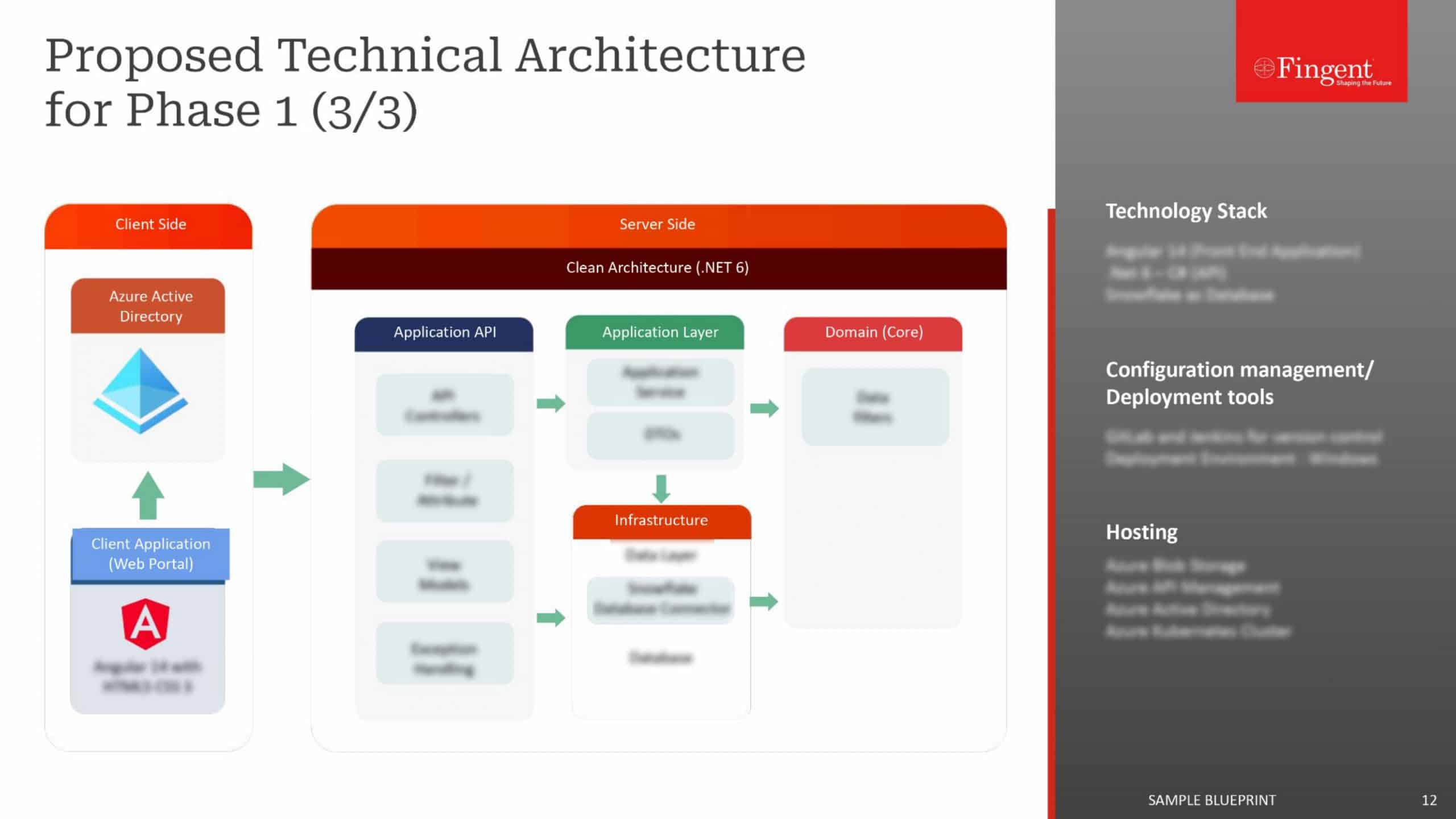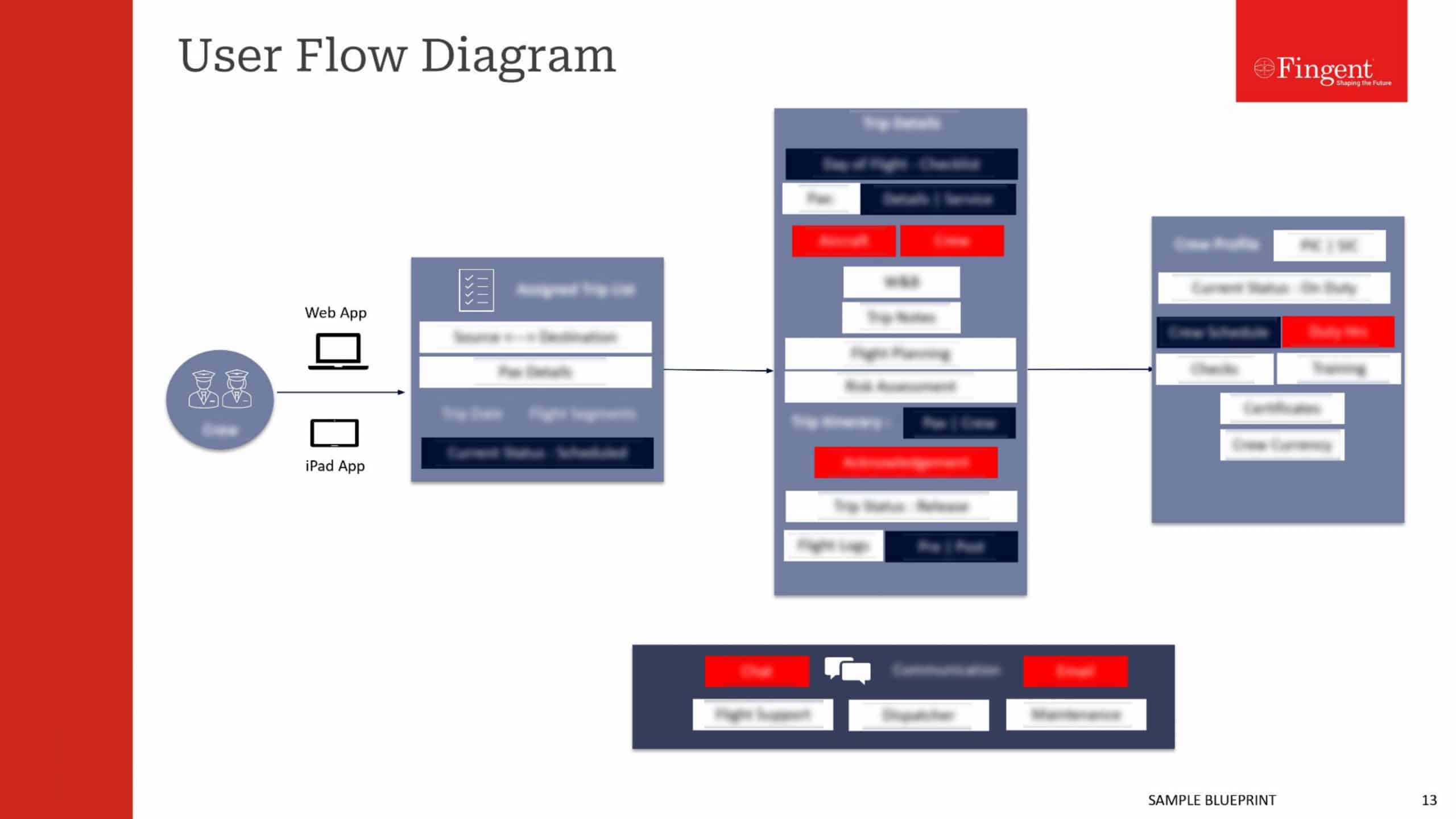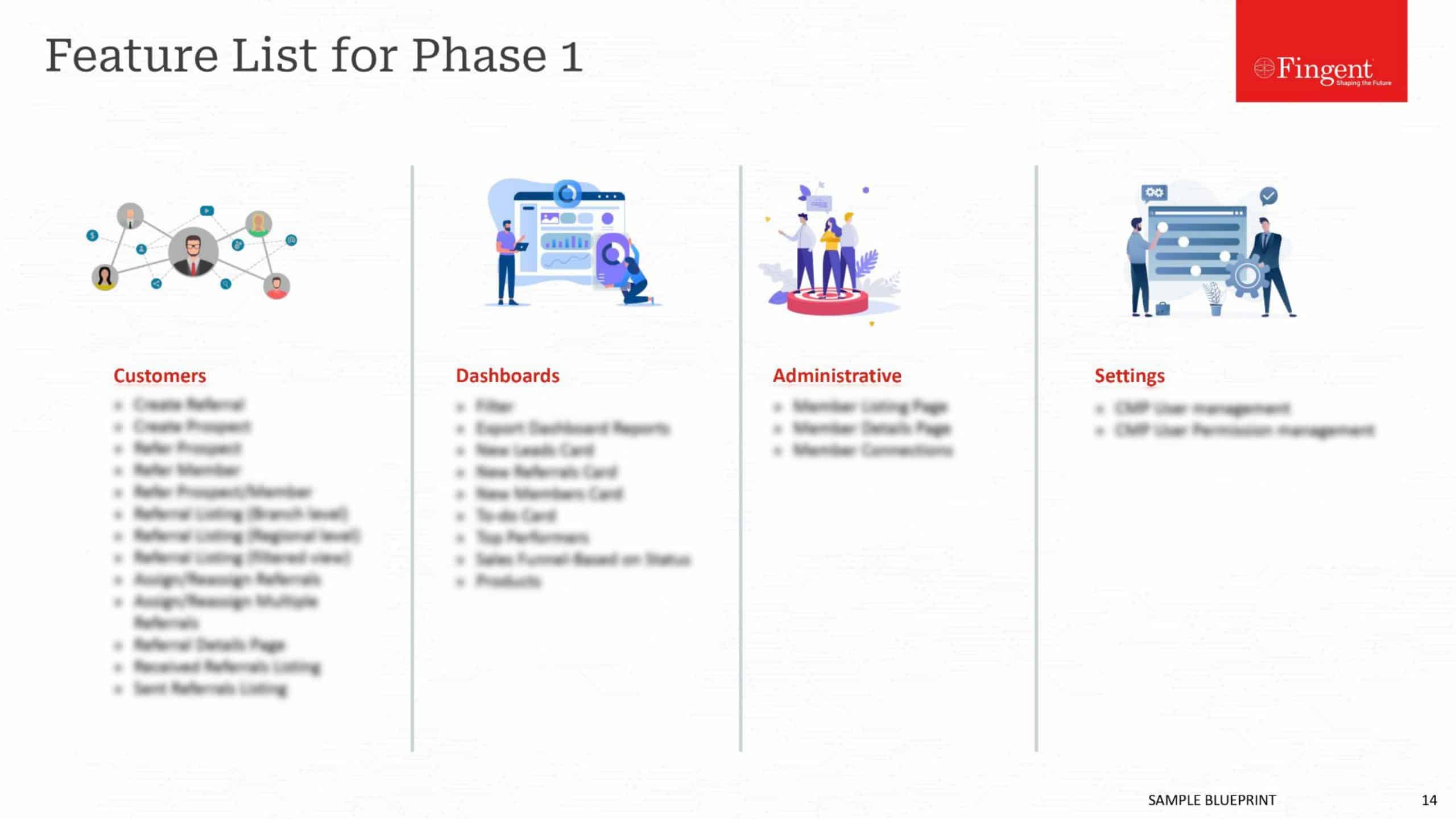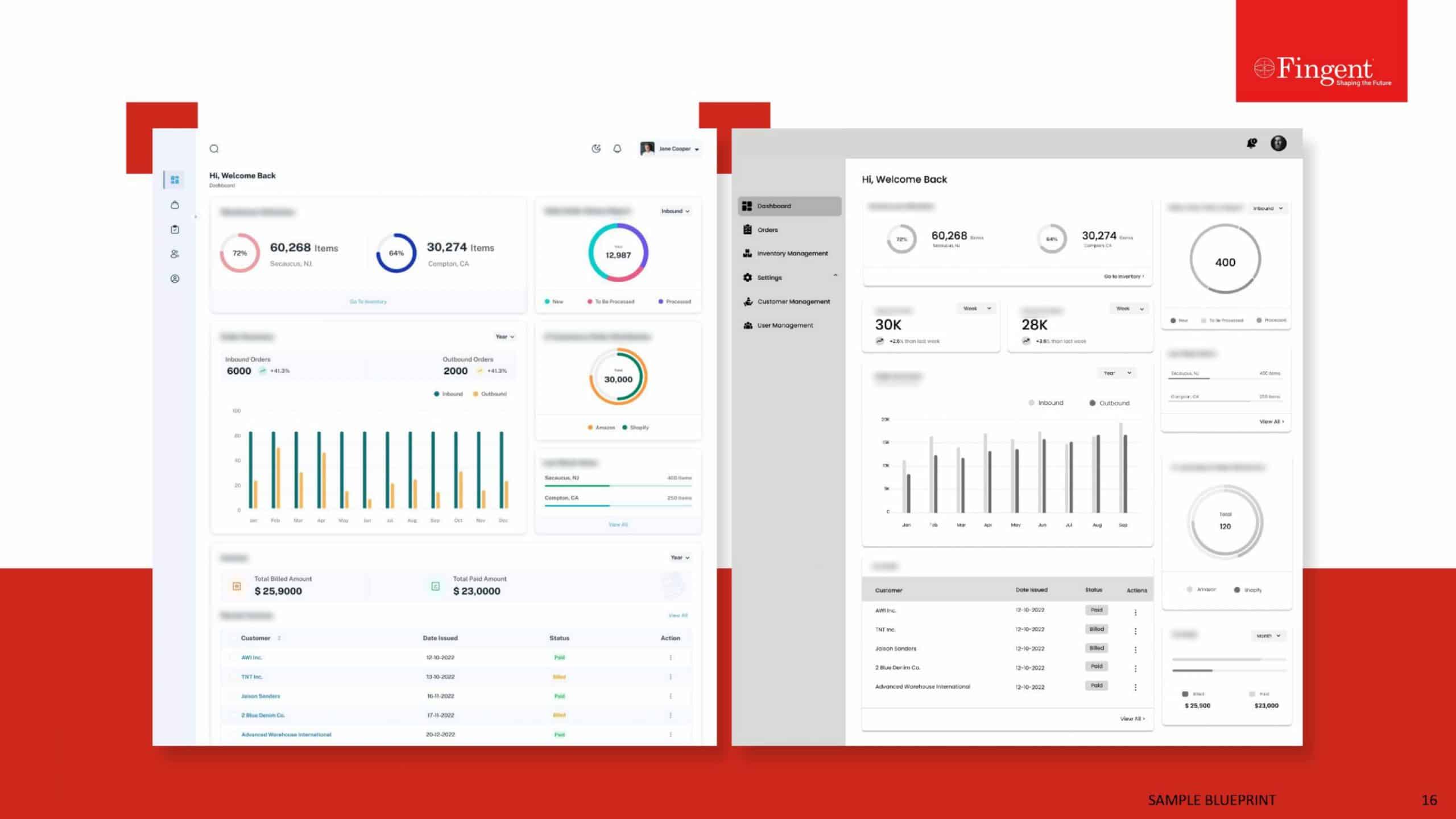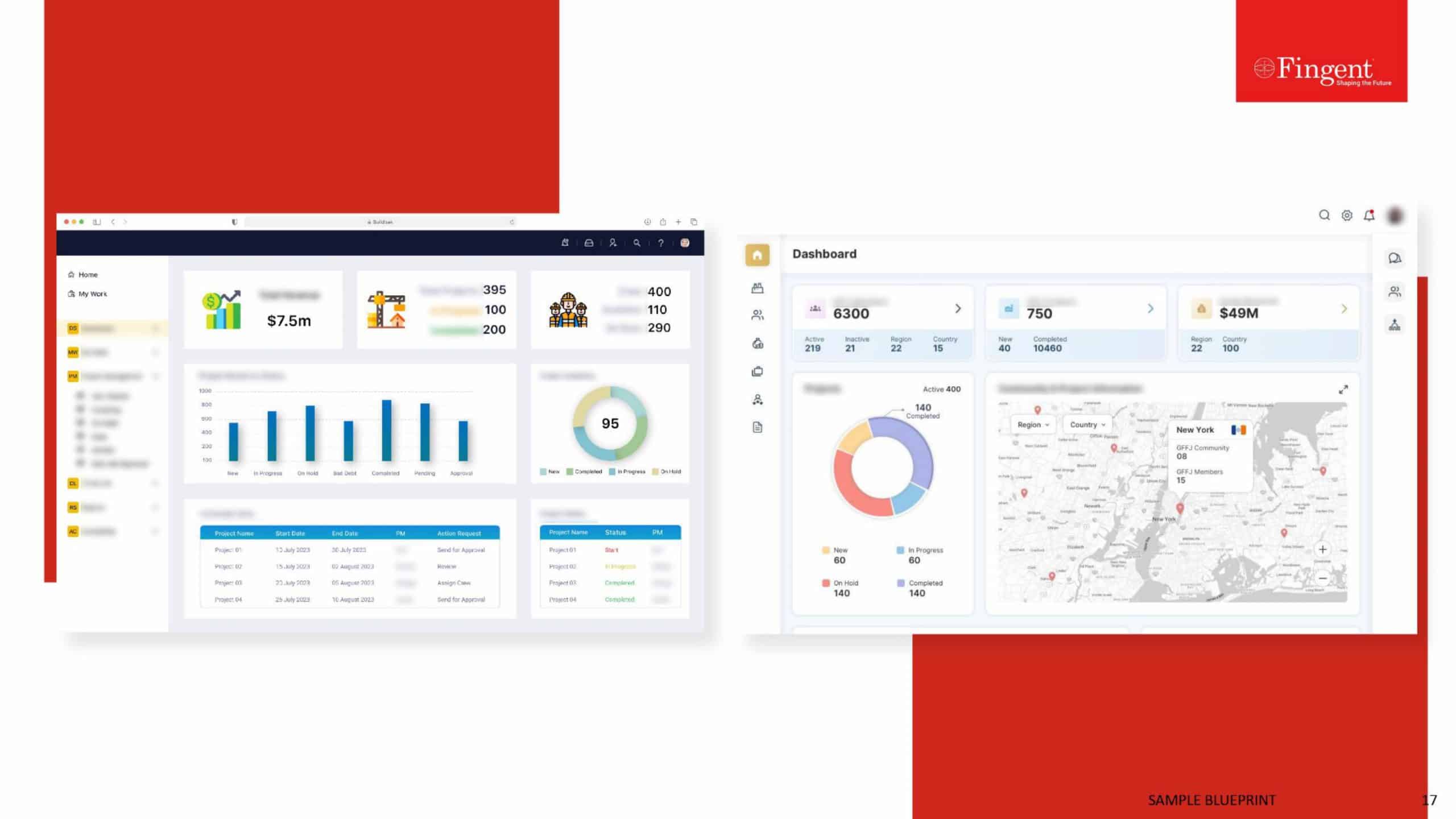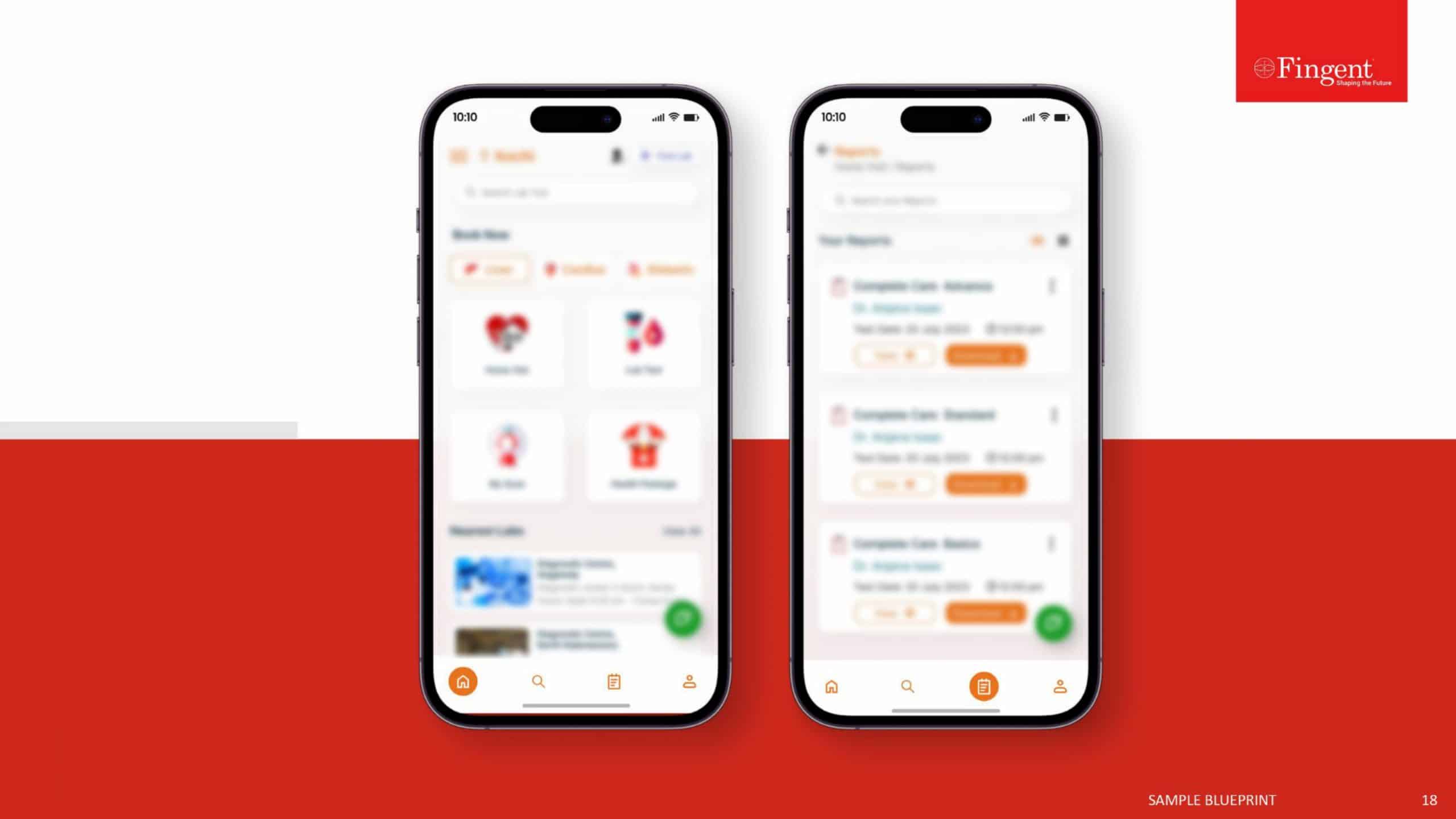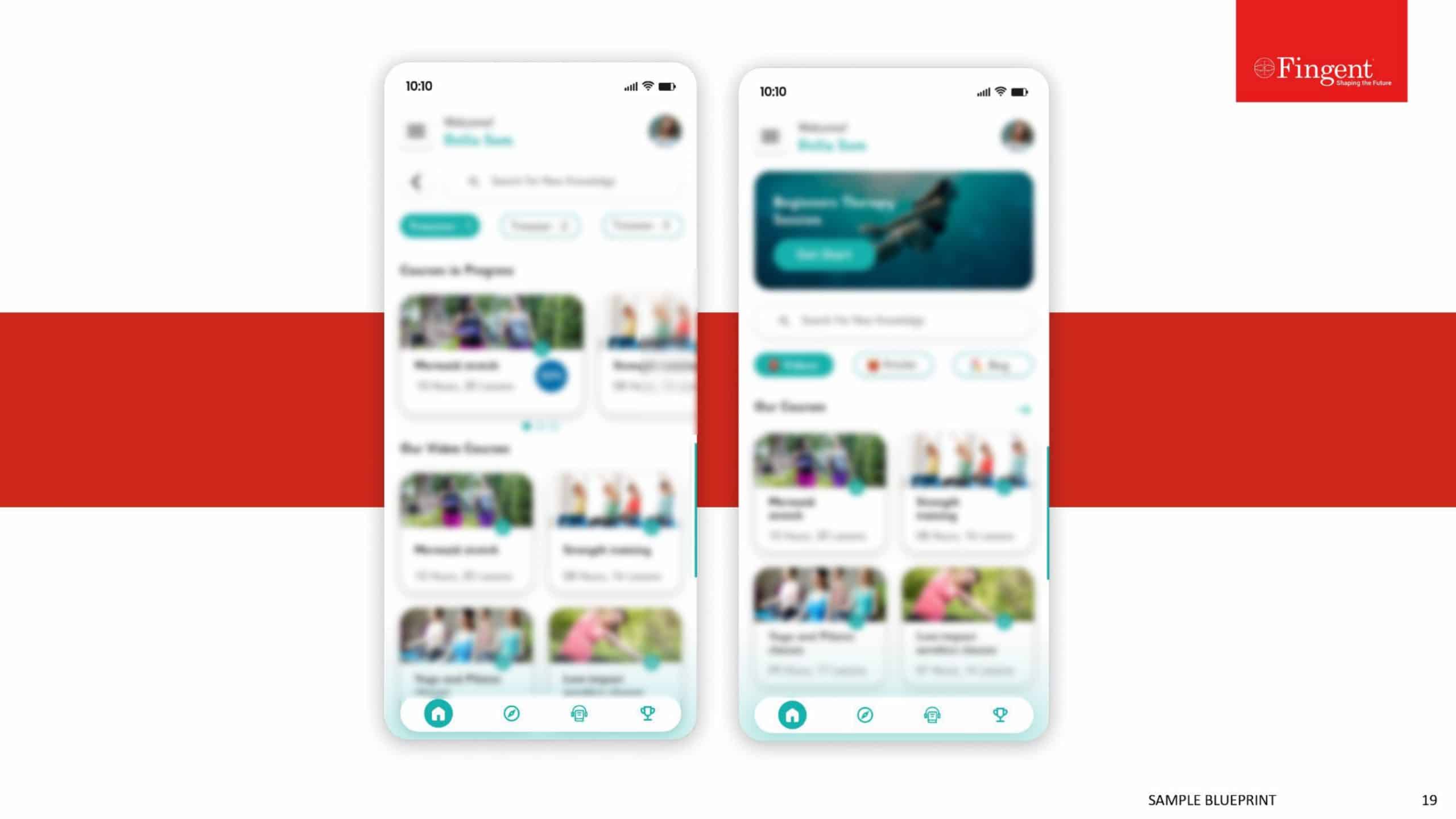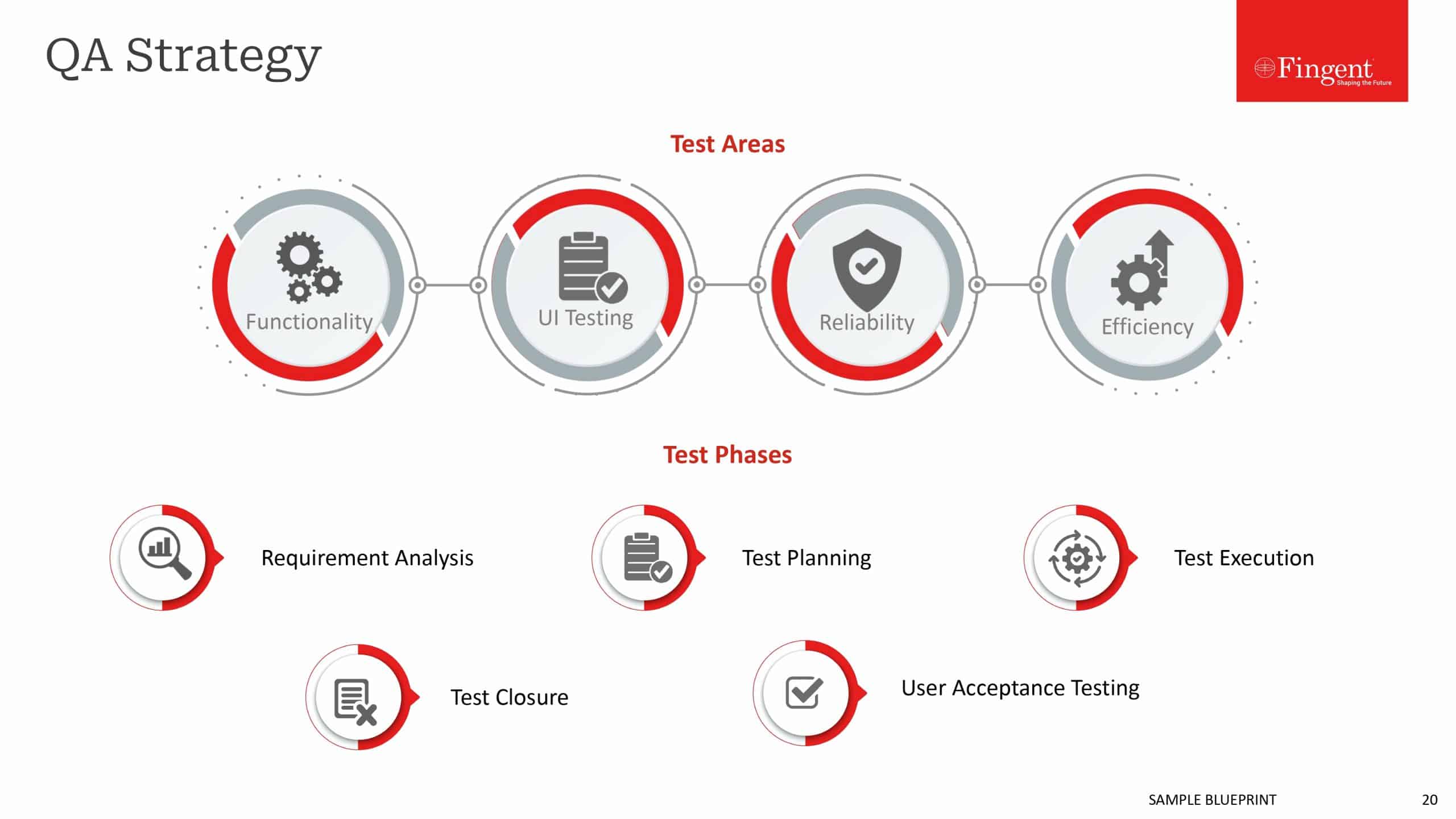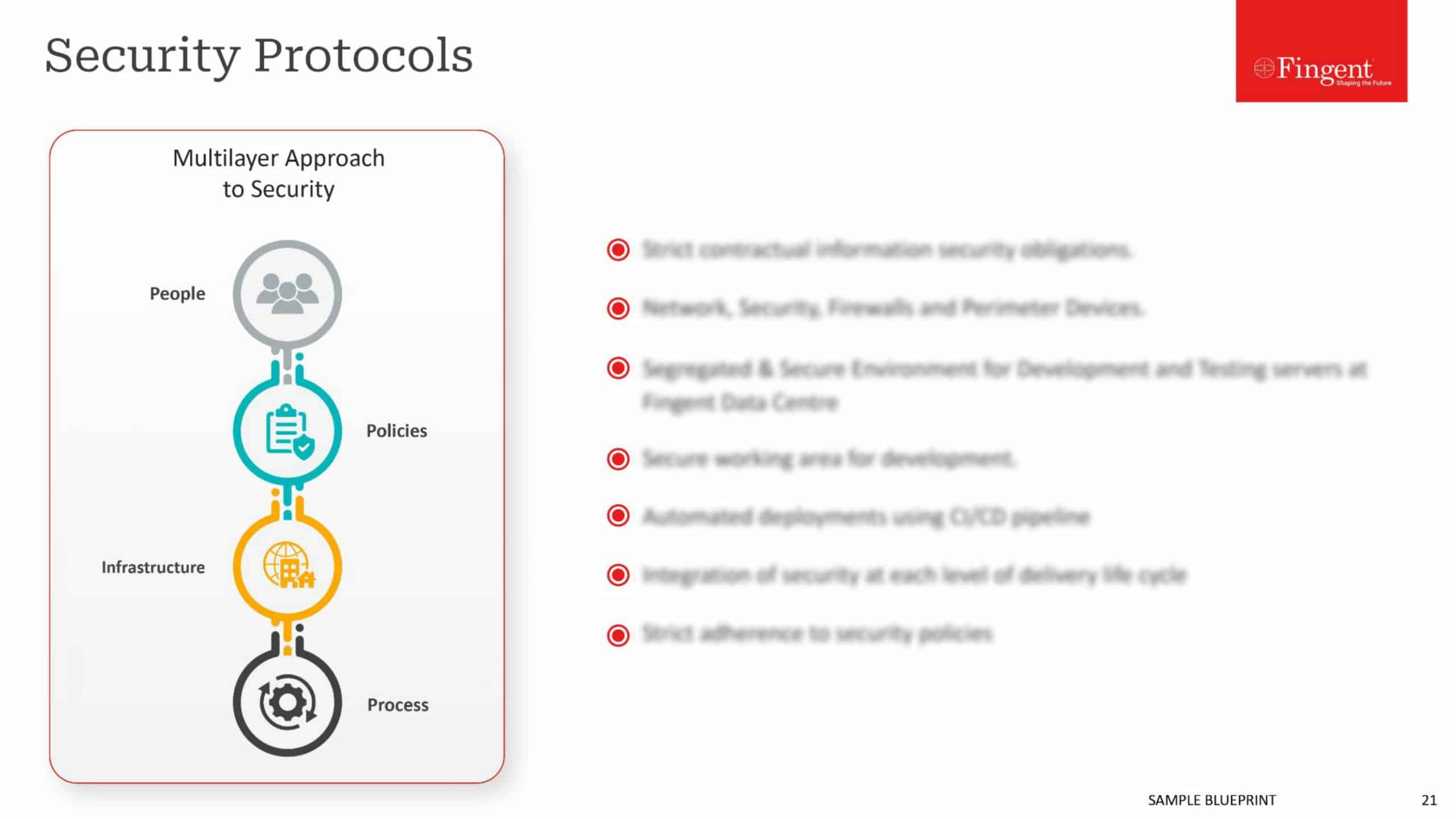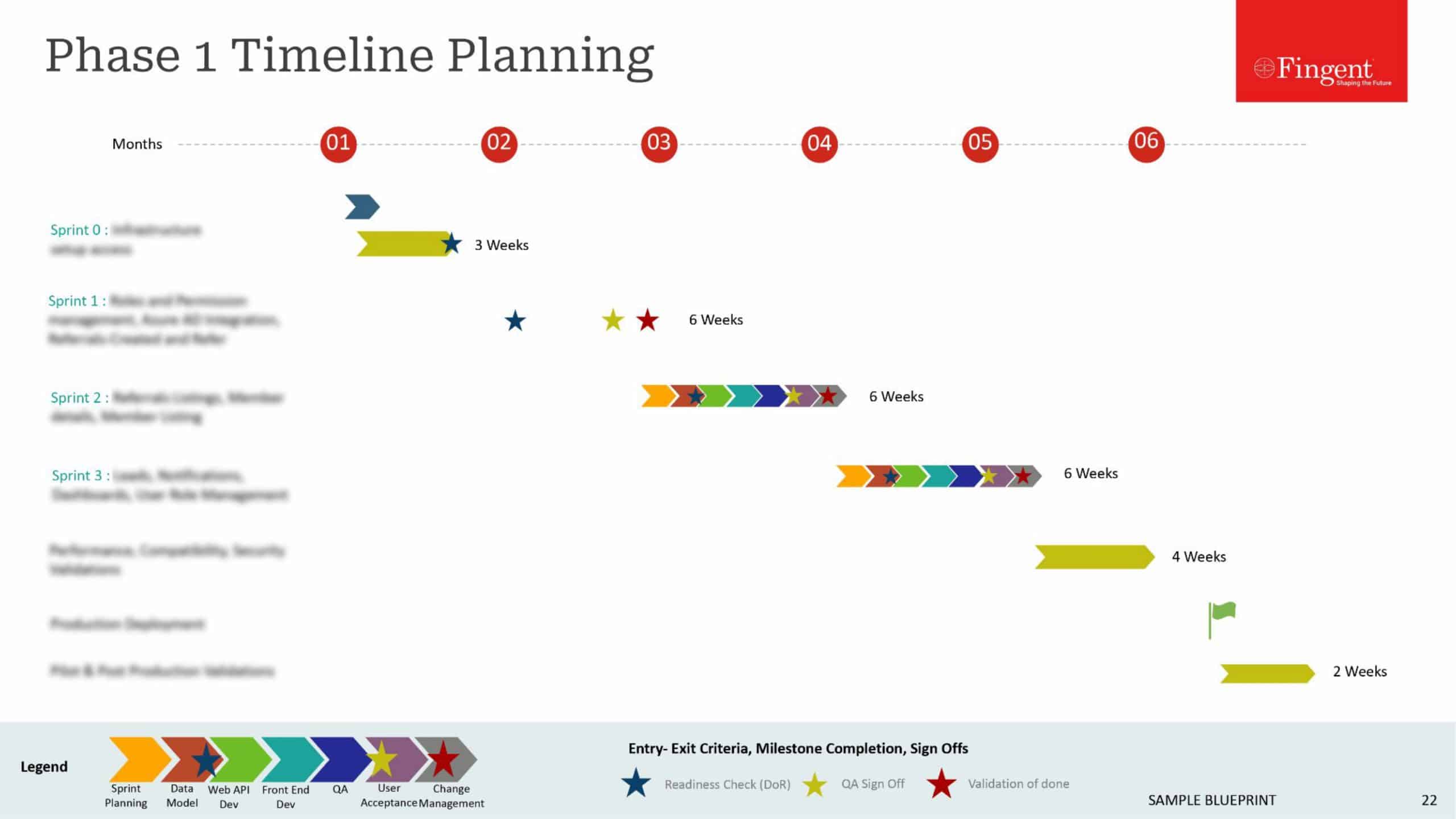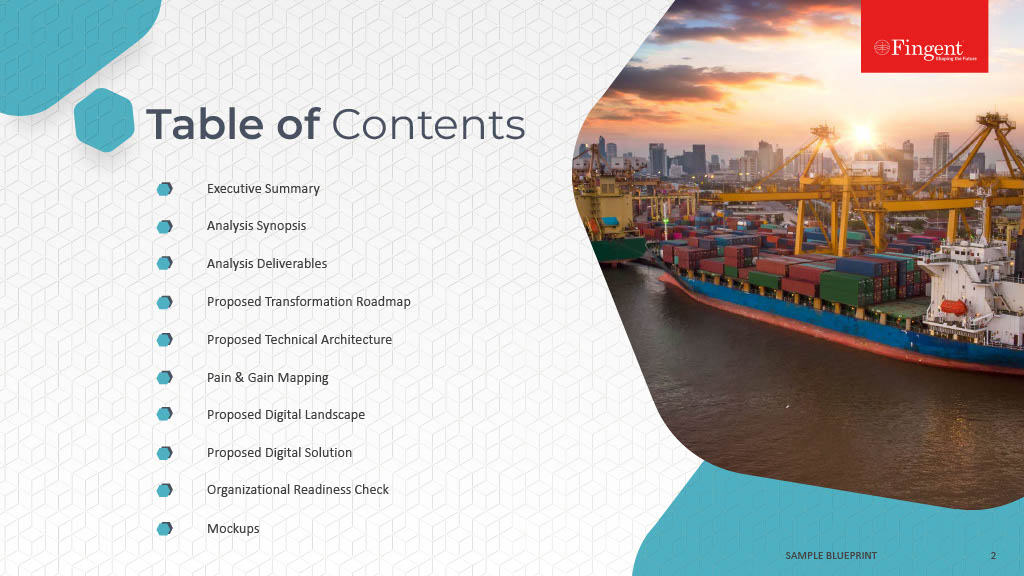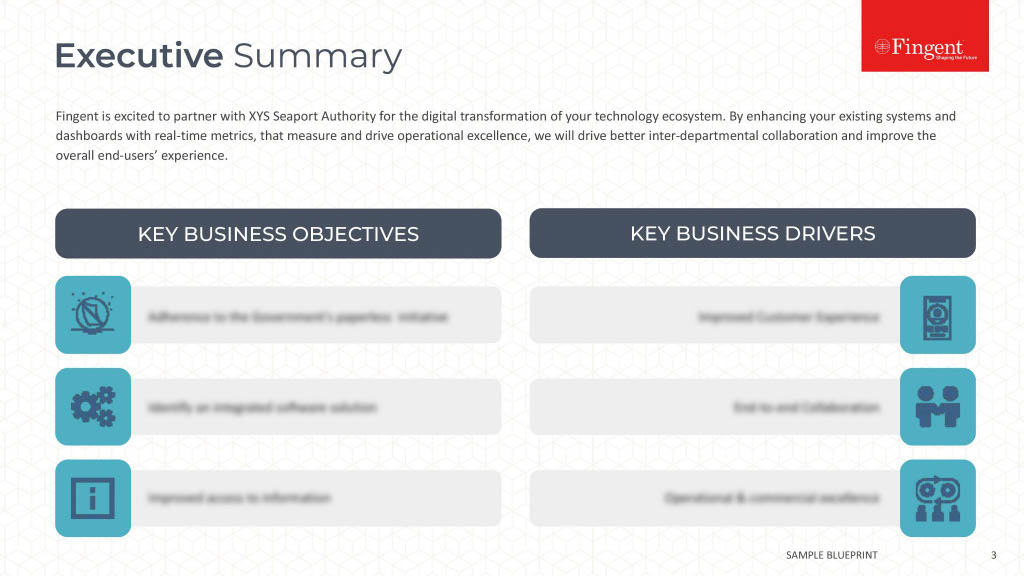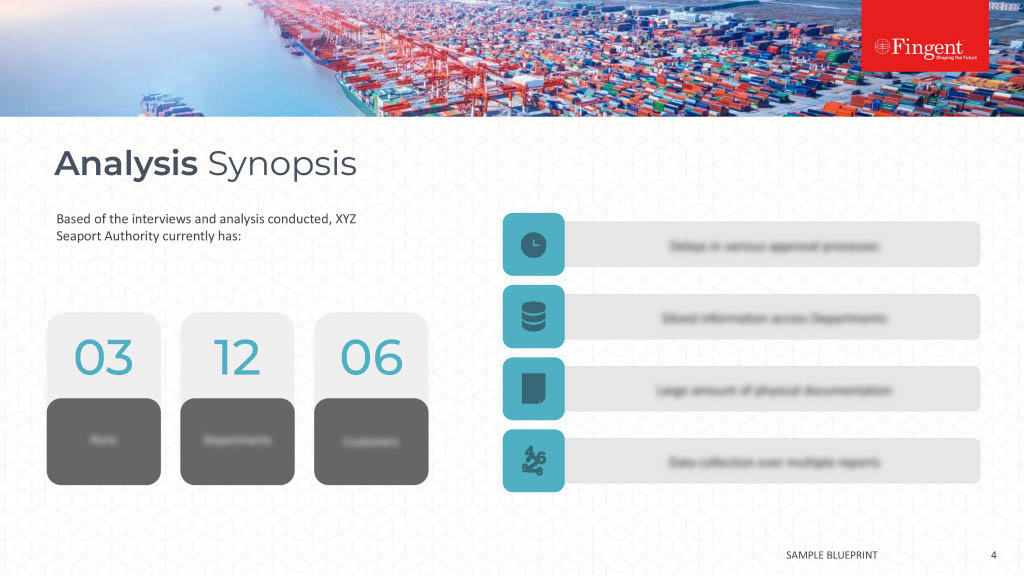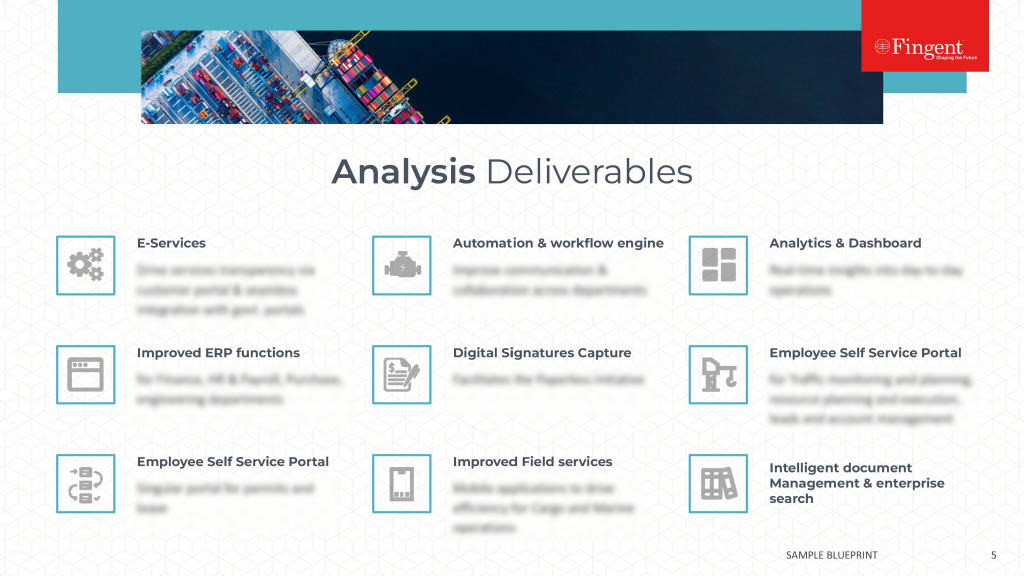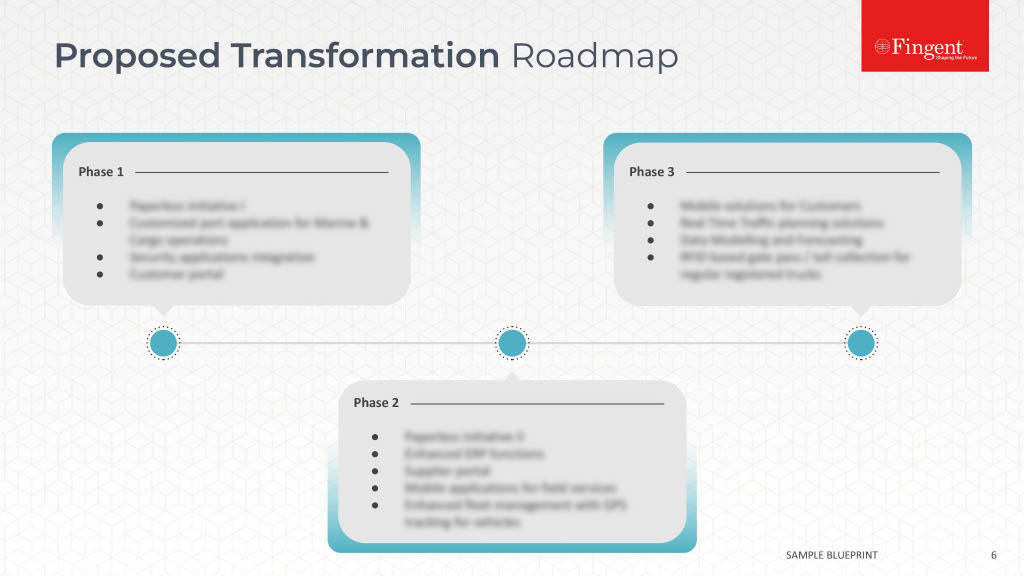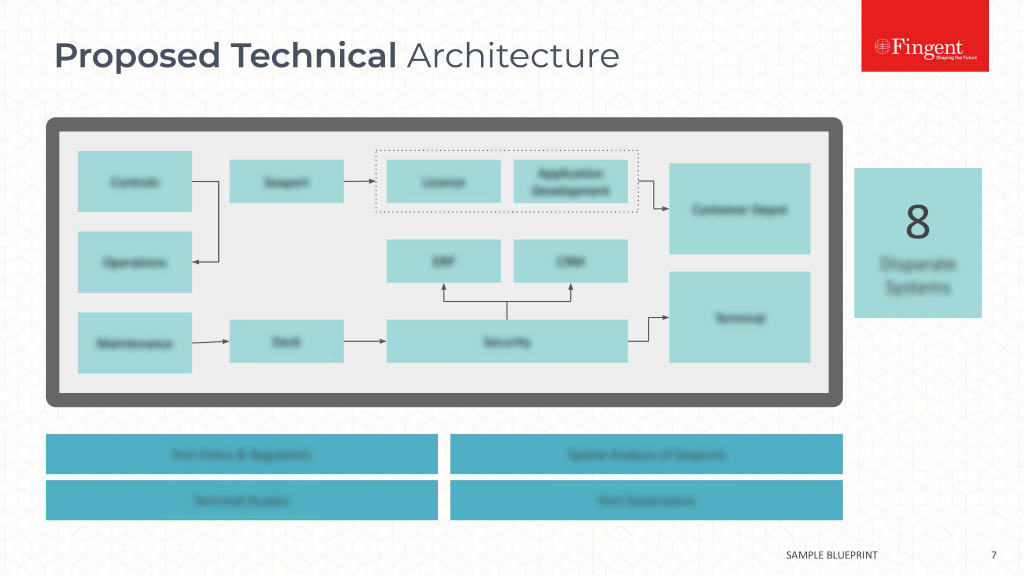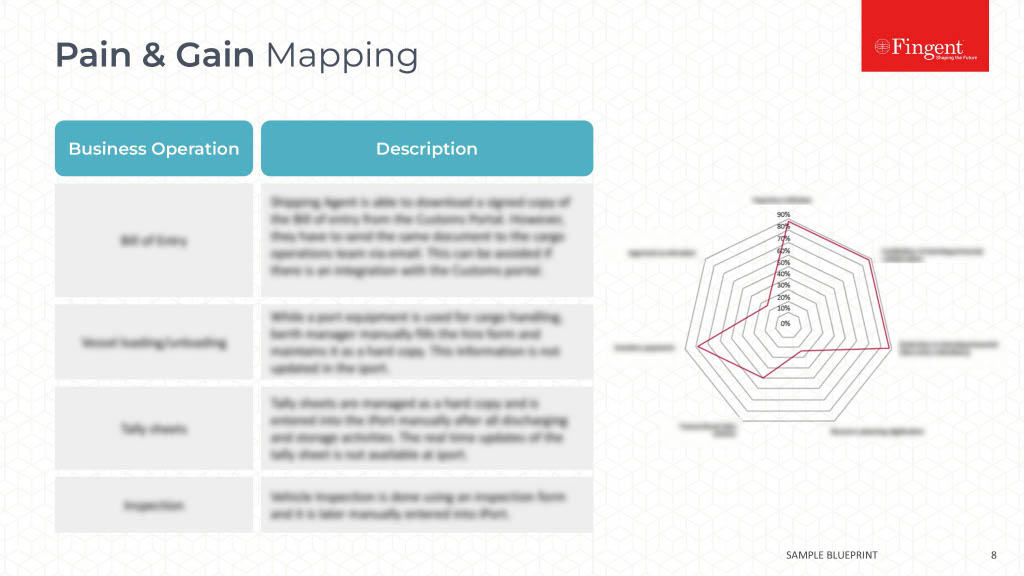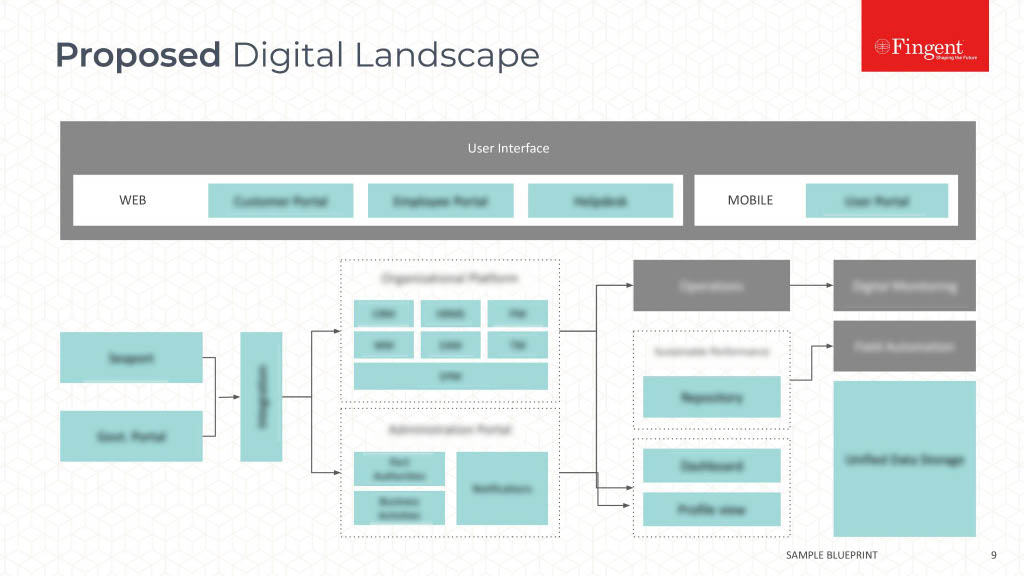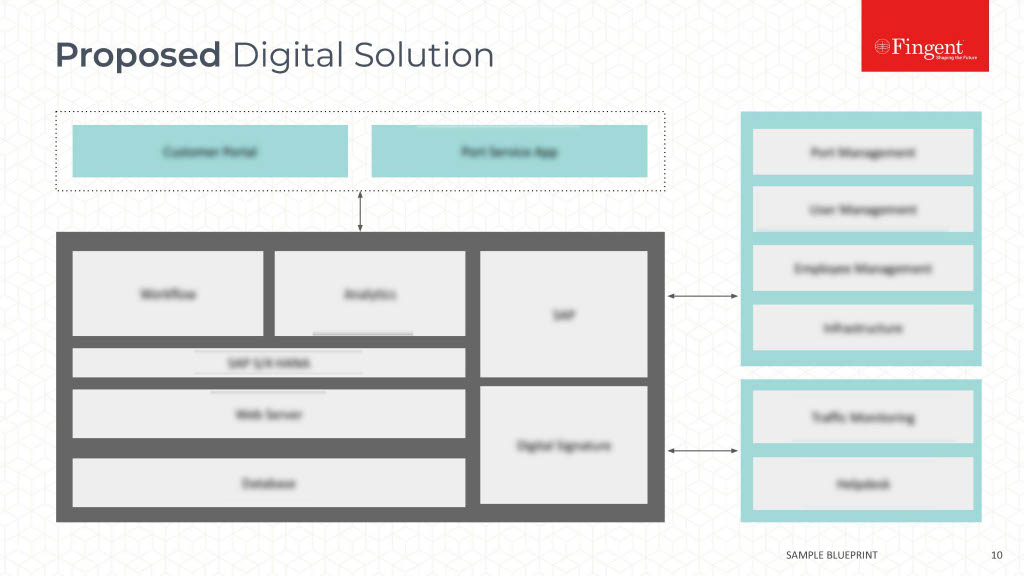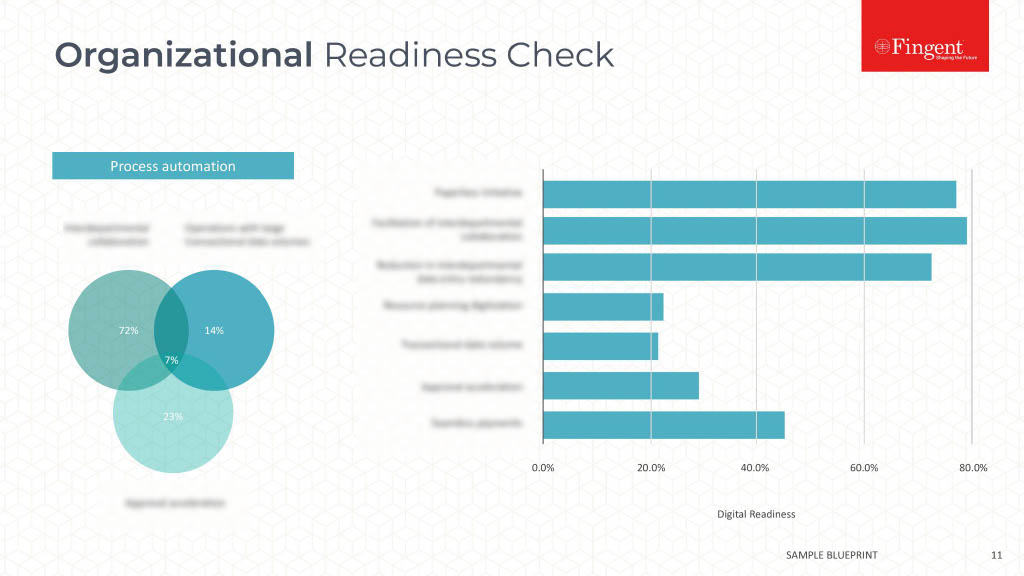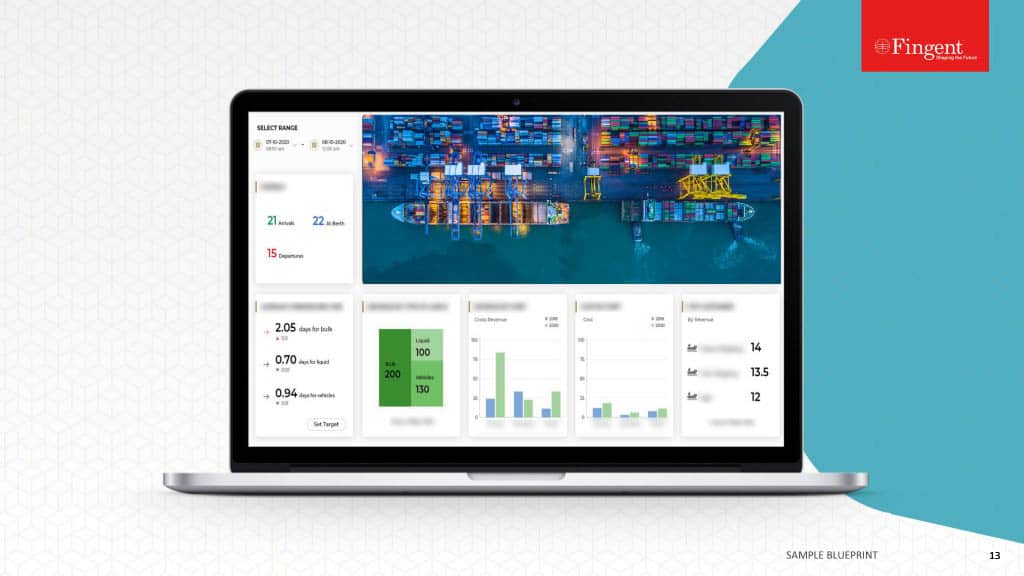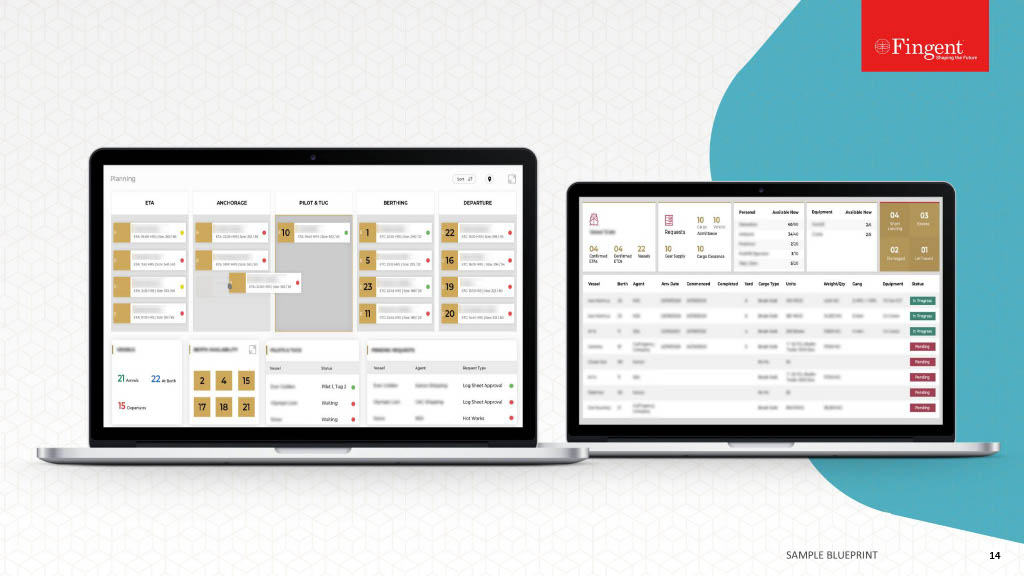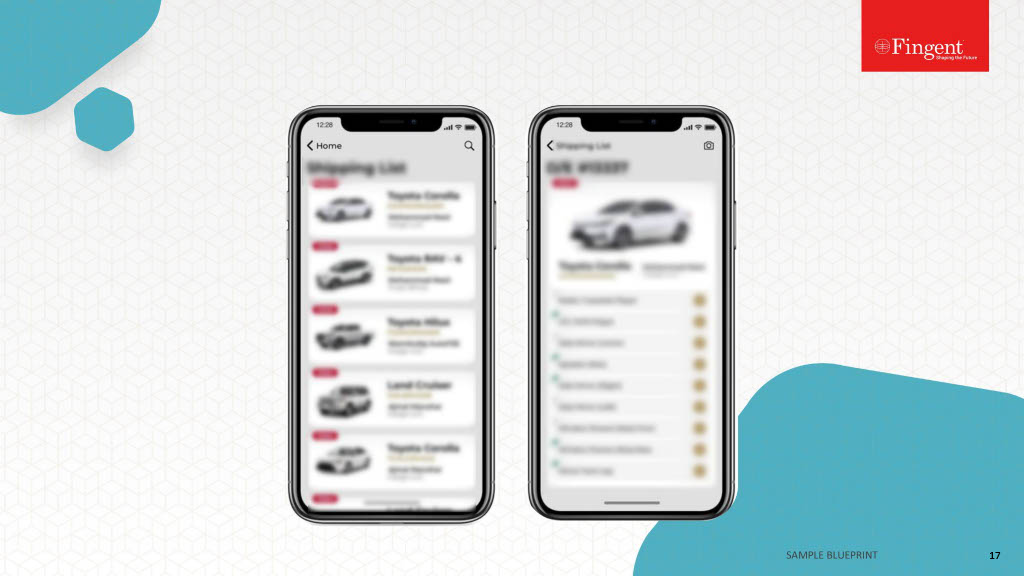Category: Custom software
A business can significantly benefit from top-of-the-line IT infrastructure that helps reduce costs and thereby increase revenue. Organizations today find it necessary to have an entire space dedicated to top data centers as opposed to few years before, when, having a few servers on premises was the norm. Enterprises demand a robust IT infrastructure model that delivers operational efficiency, high performance, minimum downtimes and maximum cost reduction.
Advocating for improved DevOps is not easy for growing organization, especially when infrastructure is not a core competency. Let’s consider the case of our client, a manufacturing giant, whose growth is constrained by a weak IT Infrastructure. Here, what should the world’s largest cooler manufacturing company, headquartered in Texas, the United States with over 1200 employees and over 500 different products do, – focus on their business or spend their time and resources on infrastructure and facility management?
The Client
Our client is world’s #1 cooler, drink containers and supporting accessories design and manufacturing company, shipping products to more than 250 retailers worldwide. They wanted to do away with the hassles of managing their IT infrastructure management and needed a right partner to independently manage their systems, data centers, facilities and infrastructure support.
IT Challenges Faced by the Client
In an effort to optimize ownership costs and system performance, the client transformed their IT systems from IBM mainframes to Sun SPARC servers and Oracle software. The client faced several issues after the implementation of Oracle’s Enterprise Business Suite, for which they sought Fingent’s Help.
Their core applications ran on Solaris OS upon Sparc hardware, Oracle Linux on Intel and Microsoft Windows server on Intel. To better support the applications, better synergy was needed between the OS Systems Administration and the Oracle DBAs. The client also had to relocate their data center twice, relocate several terabytes of data, and immediately implement a Disaster Recovery site at their co-location facilities.
How Fingent Helped Igloo Manage Their IT Infrastructure
The client asked Fingent to replace their previous OS Admin team to enhance their IT operations, infrastructure, upgrade technology and systems and minimize outages to have a stable and high-performance environment. We installed the latest Solaris, including Operations Center, allowing Igloo to move away from Zone virtualization to a multi-node database and application servers. With Ops Center, they are now able to move their core EBS application from one Sparc machine to another in real time – without any downtime hindering their business processes. Also, the maintenance patches are applied without any outage.
Fingent offered the following services to the client:
- Desktop Management
- Server Management
- Network Management
- Vendor Coordination and Management
- Data Center Virtualization & Relocation
- 24*7*365 Days Support for Production Environment
Solution & Technology Highlights
- Full-Scale IT planning, installation, & project management
- X86 & Sparc Server Virtualization and management using Oracle VM manager & Oracle Enterprise Manager OpsCenter with Oracle ZFS Storage Appliance resulting improved application and DB performances and increased revenue for the customer.
- Disaster Recovery Datacenter build to a new location
- Introduced Cloud Environment
- 24/7 monitoring, maintenance and supporting of entire Customer Infrastructure.
- Automation of OS deployment for Solaris, Linux and Windows Servers.
- Enabled monitoring of all hardware using Nagios for proactive support.
Business Benefits for the Client- A ROI of approximately 165% over 2 years
We ensured that the client’s IT environment ran efficiently and optimally throughout a year to ensure maximum uptime and minimal costs. Our team constantly worked to solve every challenge that the client faced in a very short span of time, and supported their future expandability and redundancy, within their budgeted cost factors. And as a result, the following benefits and results were incurred:
- 24*7*365 availability of IT infrastructure management
- Consistent increase in productivity and turnaround time
- A return on investment of approximately 165% over 2 years
- World-class infrastructure maintenance, Stable productive environment & guaranteed uptime
- Better control over existing infrastructure
Fingent’s Team was able to build trust and confidence in the client’s infrastructure, by building better speed, efficiency, and manufacturing readiness.
“ Indeed, the ultimate goals was to ensure that we guarantee a degree of quality and service to ensure that the client has no roadblocks in its growth path” says Vincy, Manager, Development and Operation- Infrastructure.
Fingent was an ideal choice for the client as their facilities management partner because of our expertise in providing top-notch IT services across various industries and landscapes. We ensured that the complete responsibility of IT infrastructure management was taken over from the client’s shoulders.
Want to get better ROI from your IT Infrastructure investments? Take a tour here or talk to us today.
Stay up to date on what's new

Featured Blogs
Stay up to date on
what's new



Talk To Our Experts
In today’s digital age, a website is your business’ window to the world, irrespective of whether you are a brick and mortar establishment or an online entity. Similarly, the need for a dedicated website is not just limited to startups but is equally vital for established business. Even if your business is doing exceptionally well, investing in a well-designed and responsive website can help you reach out to a wider cross-section of the audience and increase your sales manifold.
Here is rundown on how custom website development services can turn the tide for your business:
Website Development and Its Advantages
Custom web development is one of the finest things you can do to guarantee the success of your business. In addition to improving your visibility, customized website development can help your business in the following ways:
- Customized website development boosts your credibility and adds a certain brand authority to your business.
- A professional-looking website can bring you big gains without an astronomical investment, thus, offering a higher return on investment (ROI) than traditional means of advertising.
- It does not matter whether you are a newbie or a seasoned market player, there is bound to be competition in your realm of trade. A dedicated website can assist you in leveling playing field and even beating your competitors.
- It boosts your advertising and marketing endeavors across different channels. Your social media marketing and email marketing campaigns are likely to resonate better with your audience if these lead them to a website.
- Custom designed websites are cross-browser well-matched.
- Custom developed websites also costs nearly same as of any template based solution. They may have little higher cost but offer numerous benefits and total control on each part and role of the website.
Specialized, clean, and well-organized online presence is essential for preserving your brand reputation. General designs can create a negative impression of the product or service quality, the reason being customers see you as no dissimilar from thousand other companies. The website represents your business in terms of superiority, quality, and individuality, so you need to have one developed skillfully.
Importance of Multiple-Channel Presence
At a time when smartphones and handheld gadgets rule the roost, the number of people accessing websites through a desktop computer is fast dwindling. Almost everyone likes to browse the internet on the go. Therefore, a website with a responsive design – that ensures your website is displayed correctly and uniformly across platforms, devices and screen sizes – is essential to stay relevant in the dynamic online landscape.
As per statistics, whopping 67 percent users are more likely to use an enlisted service or buy products on a website with a clean, responsive design. In contrast, 61 percent users are likely to exit a website with an unfriendly layout and design. The bottom line is – a potential user may bounce back from your website and move to that of your competitors if you don’t cater to a multiple-channel presence.
How Digital Marketing Can Help
Building a website from scratch is no big deal, given the user-friendly content management systems like WordPress. Even so, if you really want to make an impact with your web presence, it is advisable to use professional custom website development services because you don’t just need to build a carefully-strategized site but also work toward improving your search engine rankings to attract massive traffic. People will know that you exist, only when your website is visible in search engine results. A smart digital marketing campaign can help in bolstering your web presence to clock-in tangible gains.
Stay up to date on what's new

Featured Blogs
Stay up to date on
what's new



Talk To Our Experts
Enterprise software solutions are the backbone of an organization. Selecting one for your organization is a great responsibility as it requires detailed analysis at each and every step. The major challenge lies in understanding that every organization’s structure is different and cannot do with the same software that was used in your previous organization or is used at the competitor’s company. To make your task easy, here are 8 challenges to avoid before purchasing an Enterprise Software.
1. Change Management
One of the key understandings that should come with a new Enterprise Software is that there is a need for identifying the changes in the IT infrastructure beforehand and then implementing it. Know how much change is required and if it is possible to handle before purchasing the new software. Also, the employees need proper training for change management and to get them comfortable with the new system before it goes live on an organizational scale.
2. Physical Requirements
Before jumping into a purchase decision, figure out what is the current IT infrastructure landscape, if it fits well or requires changes. For a newer setup, choose the software wisely and then plan the landscape. But remember, the software you choose defines this landscape and should be thoroughly checked to avoid any unwanted changes in the future.
3. The load of migration
Data is the basis for every industry functioning in this day and age. Introducing newer software to the system means adding your current data to it for validation and future operations. Check the requirements of the new system you plan on incorporating and if the required is way too much. Remember data is imperative to the organization and correct migration will minimize errors.
4. What the vendor has to offer
Sometime Enterprise Software vendors are too enthusiastic to sell the product but lack a structure post-purchase. Figure out what are the key support promises that they offer and if they have a track of delivering them. A due diligence of the provider should not be skipped especially if the vendor is not a big company.
5. Readying the team
Internal challenges are one of the key points to consider for the purchase. You will have to understand the requirements of the enterprise software development company well along with the features required. Each department will offer a different list of features they need. The challenge is to create a project scope that encapsulates all these important points and uses it as a foundation to identify the right software.
6. Software scope
Considering any enterprise software, and its capabilities, it is quite hard to find one that has everything that a business needs. As organizations strive to meet individual customer demands, they rely on customization to align their strategic objectives with enterprise solutions. For instance, one of our leading real estate organizations wanted to add a document management function that enabled them to share documents easily with their field agents. However, this posed numerous regulatory constraints considering security and privacy. Our solutions experts realigned the software architecture and build processes to meet the client’s requirement.
7. Taking unwanted risks
The market has opened up for Enterprise Software like never before and every day a new solution surfaces that promises to offer the best of all worlds. New-age technology can be highly enticing but always look under the hood and see if it has been taken for a test drive. Check LinkedIn, job boards, or other forums to find out more about the seller and the software itself. Don’t elevate your risks by getting attracted to high-end technology or pricing.
8. No detailed analysis
One of the issues that hamper the procurement of the right enterprise software is the lack of understanding of your own system. Run the analysis several times and match it with what the software will provide. Keep in mind to not depend on what the next version update will feature, rely only on what the solution provides today.
9. Cutting the influences
Decision making in organizations sometimes doesn’t necessarily stay with the designated employees. It is directly or indirectly influenced by the owners or other people in important positions. No matter how well they know or what better deal is offered through a reference, ensure that the decision, in the end, comes keeping the organization in mind and not the influences.
10. Exploring all opportunities
Do not hesitate to look at third-party support alternatives as they might offer something similar or better than premium vendor support. Look at the maintenance rates that come with the software as it is something that your organization will incur on a regular basis.
Whether you are trying to set up a new system or replace an old one, an expert perspective can help reduce these risks and challenges.
Stay up to date on what's new

Featured Blogs
Stay up to date on
what's new



Talk To Our Experts
Information Technology (IT) industry is composed of innovations, growth, and a lot many transformations. There are many uncertainties that are associated with the IT industry due to the rapid changes in the technological trends. The preferred skill sets by the employers also change as per the trends and demands of the industry and the IT professionals face the burden of the same. In the coming years technologies, such as cloud computing, mobility, Big Data, Business Intelligence, and networking were on a rise.
The IT industry surpassed $3.4 trillion-mark in 2016 and is set to cross $3.5 trillion milestones by the end of this year. There are three primary components that are associated with this industry viz. hardware, software, and services. These three components make up for 59% of the global total and the rest 41% is covered by the fourth component, that is, telecom services.
The following list covers the most in-demand IT jobs and skills in the coming days:
- Data Analysts: There are massive clusters of information that an organization processes and manages on a daily basis. The role of a Data Analyst includes the identification of relevant patterns and trends from these data sets to assist the organization in strategic planning and decision-making. There are various automated analytical tools that have also been developed for this purpose. With the increase in the need for data and information, the role of a Data Analyst is high on demand. It is expected to grow by another 25% in the next five years.
- Security Analysts: With the increase in the usage of data and information by the organizations, the likelihood of the security threats and attacks have also gone up. It has led to the increase in demand of Security Analysts, Security Administrators, and Data Security Managers. The year has witnessed some gruesome information security attacks, such as WannaCry ransomware attack. The attack had an adverse impact on the computer systems and network in over 150 countries. The need for a highly efficient data security team has become prominent as a result.
- Health IT: The use of IT in the healthcare sector has increased in the recent years. With the growth of remote health monitoring and telehealth tools, the demand for health IT skills has also enhanced. The much in demand roles in this area include Clinical Informaticist, Clinical Systems Analyst and Revenue Cycle Analyst.
- Web Development & Programming: The involvement of web has become an integral part of the business all across the globe. The latest web development and programming skills, such as the use of lightweight programming and responsive web design & development are being looked upon by the employers. Also, the skills of mobile application development have also grown due to the rise in the usage of mobile applications.
- UI/UX Designers: The primary motive of any web application or a service is to attain maximum customer base and higher levels of customer engagement. One of the most significant aspects to achieve the same is a rich and visually appealing User Interface (UI). The customers are attracted towards the applications that offer them higher usability and good user experience. The demand for this role has therefore increased with the increase in the use of web and mobile applications.
- IT Project Management: One of the most significant resources in any of the IT projects is the Project Manager. There is a lot of responsibility that is put on the shoulders of this resource during the project life cycle. It is, therefore, anticipated that the IT project management skills will continue to remain in demand in the years to come.
With the change in technology, there are also some of the skills that are no longer demanded in the IT industry. There was a time when Mainframe computing was considered as a top skill for an IT professional. However, the latest technological advancements have eliminated the demand for the same. The use of manual testing processes has been replaced by the automated testing practices which have kept the skills of manual testing on low priority. With the advent of social media, the requirement of SEO specialists has also diminished.
The face of IT is changing at a rapid pace. It has become necessary for the IT professionals to maintain the pace with the changing nature of IT. They should always look for the mechanisms and methods to enhance their skillsets to maintain their value in the market.
Stay up to date on what's new

Featured Blogs
Stay up to date on
what's new



Talk To Our Experts
A niche business is no longer a term used often these days due to growing competition in every sector. In the world of startups and well-established enterprises, the companies that stand out clearly in front of their customers will only survive and succeed. Smartphones and fast data packs are beneficial to companies in terms of reaching out to their customers via desktop and mobile websites. But having such a front is a norm today and you will have to think of giving a little more to engage them. According to studies, business mobile apps have a higher rate of conversation when compared to desktop or mobile websites. You must be thinking how will a custom mobile application development help boost your business? Here’s how –
1. Better customer relationship
A custom software development offers customers a way to access your services and products directly. Especially, if you are a product-oriented company, you can have your products laid out better over the standard formats of e-retailers. Also, you can send offers, notifications, and even receive feedback from customers in real-time. You can even have a dedicated app team that offers support 24 x 7 and sorts query for customers with in-app emails and chat.
2. Creating and maintaining database
A custom app will give you the opportunity to access existing customer data and acquire new ones. Also, your app will have your own specialized security features that will safeguard your data against potential leaks and threats.
3. Integration with current services
If you are a software provider then a good way to offer more to your clients is by creating a custom app that syncs with your software. There can be reports, updates, and even a way to access information quickly and easily. To further improve client satisfaction, you can even hire a dedicated support team for app management. Such integration will definitely give your software some extra brownie points while marketing it.
4. Generate revenue
Apps are not just a great way to connect with your customers but can also work as a good revenue source for the business. You can charge customers a little extra for app services or an upgrade. Also, you can have in-app advertisements that add income to your kitty whenever your app is accessed by the customers.
5. Increase customer base
An app ensures that a customer is in your space and the only things they can surf around are your products and services. Having a custom app gives you a chance to put your case forward to new customers and even attract them with in-app offers. You can start giving them free trials and additional discounts via app downloads to add to your revenue. A custom app will define your uniqueness as it adds up to a brand identity for your business.
6. Project Management
Apart from seeking and retaining customers, your entire team can benefit from having an app that works for internal purposes only. Custom logins at each hierarchy can give them access to groups, documents, tasks, calendars, and more to run your business smoothly no matter where they are working from. This is beneficial especially if you have several teams working from different locations. Each team can receive updates regarding the project. Also, it helps in sending critical issues to all the personnel quickly.
Building a custom mobile app for your business is vital in this day and age of competition. Once you are clear about what you want, it’s a good idea to approach companies such as ours that build custom apps from the ground up.
Stay up to date on what's new

Featured Blogs
Stay up to date on
what's new



Talk To Our Experts
There is no information that is not available on the internet today. Digitally, the world has grown into one big continent. Digital presence has become vital for every business, small or large. The times that you only depend on an offline marketing campaign or connection is gone. Today, more than 80 % of users go online and search for things. Even if they zero in on a product, they still will research the product or the brand online. In such a situation, a business that doesn’t have a strong presence online will suffer. Business growth can be directly related to promotions, public relations, advertising, and sales. Let us see how getting a digital presence will boost your business –
1. Provide information
A business with a decent website offering all necessary information that users seek is a good start. Even if you run an offline business, customers will seek online information to know about you even before walking into your office.
2. Get more customers
The digital world is a great place to find potential customers who might be interested in what you are selling. Social Media is a good place to begin campaigns that are not necessarily direct marketing. Spread the word with hashtags and keywords. Your current customers will share your posts and turn into indirect marketers as well. These platforms provide a boost to your visibility and provide the right traffic your business requires.
3. Be visible
When your business has been tuned with Search Engine Optimization (SEO) elements, you will start getting more and more traction. The right type of optimization will ensure that you end up as a top search whenever a customer is looking for a relevant product or service that you are offering. Also, it helps you get an edge over other competitions, both offline and online since your name will come to the front and grab more eyeballs.
4. Market your business
Advertising your business is the sole way to boost your sales and nothing works as good as digital marketing in this day and age. Apart from having a presence on social media websites, targeted marketing campaigns on these sites will spread awareness about your products and services team with great offers to attract customers.
5. Improve Services
Digital presence of your business provides you with an opportunity to directly interact with your customers. Listen to their grievances, feedbacks, and even offer a solution for their problems. This feedback pattern can help you decide on improving your products or services. Companies can consider some of these points as a part of their marketing strategies to bounce back or to adopt what way to go forward. Such a medium works perfectly well for your business as well as your customers. To increase visibility and drive new business, companies create custom business solutions to advertise online.
6. Global Presence
If your business is local and has an aspiration to go global, the digital world is the right place to put your foot forward. It helps in not just connecting with people worldwide but also getting yourself known to everyone. You can add posts on social media websites regarding your services and add a survey to know if they would like these products or services in their locality. It’s a great way to know the potential of a market even before you actually start the ground activity. Businesses that are looking for investments can also leverage on this very presence as one of their key strengths.
A great way to add a digital presence to your business is seeking the help of an experienced digital partner who can provide you with all the necessary tools to get you started and then skyrocket your business ahead.
Stay up to date on what's new

Featured Blogs
Stay up to date on
what's new



Talk To Our Experts
Decisions regarding selecting and deploying a new software to run a process have far reaching implications, and can even make or break the enterprise. Deploying the wrong software, or even implementing a good software the wrong way, can wreak havoc with company process and systems, put off customers, and at the very least stress out the enterprise into a perennial firefighting mode.
When selecting software vendor partners, most enterprises look primarily at the experience and skill-set of the development team, and the portfolio of completed projects. The usual questions asked to relate to testimonials, experience, costs, and training. While these aspects indeed constitute the basic due-diligence areas for selecting a competent software vendor, the devil lies in the details. Many enterprises make the mistake of conducting a superficial due-diligence, only to regret it later when a half-baked software with messed up implementation stares at their face.
A decision on software vendor selection, to implement new software requires proper planning, a well-defined process, and careful evaluation. Here are the major aspects to consider.
1. Define the Broad Needs
The first step in software vendor selection is to define the needs of the enterprise in a clear-cut manner, without any ambiguity, and match such needs with the features and functionality proposed or offered through the vendor’s software. A related consideration is to seek a fit with the vendor in terms of having the same outlook towards the business, in terms of a proactive attitude, prompt and transparent communications, focus on agility, or any other traits.
When considering logistics software, some of the usual needs include warehouse automation tasks, tracking cargo, automation of various activities related to supply chain management, and more. The need for supply chain visibility is critical for transparency, which in turn would deliver process efficiency and customer satisfaction. Enterprises would, however, do well to be wary of blindly falling for a generic list of functionality, and make sure the vendor is capable of delivering software which fulfills the specific needs of the enterprise. This often translates to custom software or a highly customized variant of generic software.
Many enterprises make the mistake of designing the system rather than defining the business needs. A successful software implementation usually makes work easier and more streamlined, but a new system that does not take into account the specific process flows of the business would only result in making the enterprise dysfunctional. Make sure to clarify the business needs, and ensure the software vendor has the capability not only to fulfill the technical requirements, but also identify the specific requirements of the enterprise, and design the software accordingly.
2. Reconcile Process Conformity with Flexibility
Today’s businesses are caught in the crosshairs of an extremely volatile business environment. In such a scenario, specifying exact requirements for an inherently rigid software system is a challenging task.
Requirements gathering encompass both functional and nonfunctional requirements. The best approach is to keep the requirements gathering simple, at the initial stage, to get the basic structure right, and delve into the details later, with flexibility inbuilt into the structure. A full blown set of system specifications take a significant amount of time, effort and skills to put together, such details are anyway an overkill when initiating a vendor selection exercise. Once it is proven the vendor is capable enough for the task, it is time to delve into the details.
Staying away from detailed system specifications is not an excuse to ignore developing a list of clear and verifiable requirements. Make sure to include the specific business process the software has to support. In the case of the logistics industry, this could be anything from warehouse management to inventory control, from shipment tracking to invoicing, or anything else, including a combination of any number of processes.
Regardless of the initial specifications, the trick is to ensure the software is expandable, with the provision to support other key feature areas, which may be needed in future, especially as IoT is all poised to unleash a big disruption in the logistics space. There is also a need to ensure seamless integration and ability to pull in data from with diverse systems, considering the logistics ecosystem is now marked by strategic alliances and tie-up with different partners, each having their own software and systems. In fact, a single enterprise may run two or more systems, developed by different vendors, and sync or data integration from such other systems is a must in today’s age of big data.
These requirements translate to the vendor being competent not just in the technical front, but also adhere and comply with industry best practices and well-established quality standards.
3. Clarify Expectations on the Feature List
Drawing up the list of essential features the software should have is indispensable, but only part of the story. It is equally essential to define up front in a clear-cut manner, the other essentials. Requirements include anything related to the product offering and go beyond functional and nonfunctional system requirements. The following are some of the most common requirements which require clarity up front.
- The languages the system needs to support, and whether the interface should match the language preference of the users.
- The nature of the user base, as in the number of expected concurrent users, whether the software will supporting remotely dispersed users, whether the software will be accessed by external stakeholders such as channel partners and customers, and more.
- The nature of technology, as in whether the enterprise is willing to be an early adopter of promising yet untested technology, or wants to play it safe with legacy technology which may have some limitations.
- The extent of dependency, as in whether the enterprise prefers dependency with the new vendor or whether the enterprise would eventually want to manage and update the system in-house. In the latter case, it is best to use open-source software rather than proprietary software of the vendor.
- The nature and scope of regulations and standards to be co-opted into the system, mostly as validations and as reports.
- Nature and extent of essential software related services, such as deployment, validation, migration, training and general support, quality maturity level, and more.
- The extent of reconfigurability of the new system, which influences the speed of deployment. The speed of deployment may be just as important as the quality and scope of deployment. For instance, a cloud-based solution with minimum configuration could be up and running a matter of weeks whereas an on-premise deployment could take months.
It is not enough the software vendor has the technical capability to implement all these requirements. There has to be a cultural fit to ensure the vendor approaches the software development process in the way preferred by the enterprise. Success depends on the vendor being flexible in their approach, and communicating or collaborating with the enterprise in a proactive way. A DevOps approach may work best, though there are no one-size-fits all magic pill. Any agile approach which involves the business end users would work well.
4. Do Not Ignore Reporting Capabilities
Many enterprises and software vendors focus extensively on requirements gathering, and in the process ignore the equally critical part of reporting. Several enterprises also make the mistake of straight jacketing reports into a few handpicked options. Today’s dynamic businesses require dynamic reports, deeply integrated with analytical capabilities. One of the essential purposes of the software itself is to gather all relevant data, subject it to analytics, and deliver it to the relevant stakeholders or decision maker, in the form of actionable information, in the format of choice. A dynamic logistics management software would offer intuitive dashboard and live reports, to facilitate easy decision making.
For the successful deployment of logistics software, there is no shortcut or workaround than the vendor being competent in deploying the latest and the most versatile analytical tools and being able to roll out intuitive dashboards, mobile apps, and other front-end digital assets for the enterprise.
5. Undertake a Cost Benefit Analysis
As the saying goes, “if wishes were horses, there would be all cathedrals and no chapels.” The range of possibilities with software is endless, but success lies in prioritizing for the available budget. Not everything, no matter how utilitarian, productivity enhancing, or beneficial, will make sense from a financial point of view. It is very important to have a budget up front and sync the capabilities of the software to the budget. Also, the budget for software is not just the cost to get it developed and running, but also the cost to maintain it, and upgrade it from time to time.
A best practice for the enterprise is to weigh the requirements or functionality on a scale from “essential” to “nice to have” and “dispensable”, and evaluate the vendor in terms of the extent to which they can deliver on such functionality, and the range of functionality available within the available budget. Understand the basic offerings, and what exactly each specific add-ons will cost.
6. Do Not Ignore Support, Training, and Maintenance
The software is never static, more so in today’s dynamic business environment where the only constant is change. The extent of support required, and on offer vis-a-vis the requirements, is a crucial consideration in the vendor selection exercise.
Clarify expectations on the range of support, the documentation accompanying the software, and develop a blueprint on training users for the new system. The value of supporting documentation such as procedural templates, validation documents, and training materials can never be understated, though these considerations are rarely given much importance during the vendor selection exercise.
Many enterprises leave it at this stage, which is a cardinal mistake. Unless the enterprise is a startup with no legacy systems or business data, it becomes imperative to migrate some or all of the existing records to the new system. An action plan to enforce such migration, or sync the new system with the old is just as important as developing the new system. Many enterprises focus solely on the new system, oblivious to the migration issues, such as source and destination data format, and other issues. A sound technical partner offers comprehensive end-to-end support on all the apparently minor issues, but which have far reaching implications.
Last but not the least, sound partners would also be competent to roll out the software within the required deadline
Trying to develop state-of-the-art logistics software using the internal IT team is a disaster in the making, for the roles and focus of a support team and a development team is markedly different. The best option is indeed to tie up with a software development company who doubles up as a strategic partner,ho doubles up as a strategic partner, for whom the software development process is the core competence and the sole focus. The mantra to success is, however, selecting for a fit, or making sure the software vendor ticks the bill for all the aspects above.
Stay up to date on what's new

Featured Blogs
Stay up to date on
what's new



Talk To Our Experts
Most businesses in today’s digital age understand the importance of having in place well-oiled software to smoothen their business process, optimize workflows, respond to situations as it emerges, close deals quickly, and offer impeccable service to their customers. The software is the lifeblood of most enterprises, and in fact, many enterprises based their business models on software.
However, several businesses also underestimate the effort and scope required to roll out custom software that really works. Many of them make the mistake of entrusting the development task to an already overworked and overburdened internal IT team, who have their hands full with the day to day workings of the enterprise. Also, the IT team is unlikely to have the requisite development skills, which is markedly different from operational and maintenance skills. A highly competitive business environment raises pressure on every dollar spend, necessitating lean and agile development approaches.
Businesses looking to roll out high quality and robust custom software would do well to rope in a third-party strategic partner for the development process. However, not all software development firms are equal. Blindly entrusting such a critical investment to the first off the block is a sure recipe for disaster.
As the adage goes “If you don’t know what you are looking for, you are unlikely to get it.” The basic requirement before going in search of a development partner is having a clear-cut idea on the requirements, in terms of what exactly the software is supposed to do, and the target users. Clarity on these fronts makes it possible to search for partners who are familiar or have experience in the line of requirements and get accurate proposals. After having clarity on the requirements, keep these considerations in mind when choosing a custom software development firm.
Make the Experience-Talent Trade-Off
As a general rule, the best developers are those who have good experience under their belt, having rolled out similar projects. Any development process is invariably a learning process and involves some amount of trial and error. Experienced developers on board mean the company gaining from the learning the developer did elsewhere.
However, talent is hard to come by, and in any case experienced developers may cost more. Moreover, the world of computing is fast changing, with newer technologies pushing older ones to obsolescence. It may make sense to hire upstarts fresh with the latest cutting edge knowledge, and no baggage of the past to be moored to legacy technology. Moreover, such upstarts or startups, eager to make their presence felt, may also offer competitive rates.
There is no golden rule when making a trade-off between experience and upstarts. The enterprise needs to make a call depending on what exactly they are trying to achieve with the software. Would the requirement need someone with experience, or would a fresh, new technology be better? The budget on hand can also be an important factor in swinging the deal.
Either way, make sure the selected development firm has a team of committed and dedicated professionals, sound in the technologies which are to be implemented. Experience can be either an added plus or an essential requirement, depending on the project.
Evaluate Competencies and Opt for a Learning Organization
Regardless of whether the development firm is a start-up or has been in business for long, consider their investment in the latest tools of the trade. Evaluate whether they are constant in the adaptation of new development processes, and more importantly, whether the team is interested in learning new skills and technologies as it emerges.
Evaluate previous projects undertaken by the development firm, with regards to the technologies used, the intuitiveness of the user experience, and the overall soundness of the software. For start-ups, consider the track record of the key personnel driving the development process, and evaluate the extent to which they seem capable of translating their claims into action.
A tie up with a forward-looking learning organization is important even when the development firm may have demonstrated requisite skills required for the project. Software projects are rarely one-off endeavors. If nothing else, the firm would have to continue the relationship for support and upgrades, where knowledge of the latest technology becomes crucial.
Place Value on Collaboration
The spread of technology makes the world an interconnected marketplace, meaning it may no longer be necessary to hire a developer whose office is a few blocks away. In fact, outsourcing the development work to popular offshoring destinations is a great way to cut costs without compromising quality. However, while collaborative tools exist, stakeholders or team members still need to connect.
The very raison d’etre of custom software is to customize the software for one’s requirement, and success depends on close collaboration between the different stakeholders, from product managers to field executives, from customer facing end users to top management, from development teams to coordinators, and others. Seamless and real time collaboration is essential for requirements gathering, to understand the requirements, keep to the timelines, and there is no gap between expectation and execution.
The right custom software development company offer proven team collaboration and PM tools, to make the development process seamless. They would also deliver their critical inputs and suggestions to make the software better, and reach a consensus on the scope and methods, including the development methodologies, the extent of testing, and other crucial considerations.
The technology is only a facilitator. Opt for a development firm with a culture of collaboration, transparency, and openness, which makes all the difference.
Do Not Overlook the Legalities
In the midst of technical and strategic vetting, do not overlook the legal implications. The development firm would inevitably be gaining access to trade secrets, intellectual property, and the business strategy of the firm. As such, make sure to undertake extensive background checks, to be assured of the integrity and reliability of the partner. Here, developments firms who have already been in the business for some time have an obvious advantage, of having proved their credibility through the test of time. Make sure to clarify ownership of the software. Many businesses overlook the obvious and pay the price down the line.
When outsourcing to another country, make sure to evaluate all the legal implications of both the host country and the country where the data will reside.
Selecting a development firm is akin to selecting a strategic partner, and as such due diligence is essential. Apart from evaluating the firm on a purely technical and legal perspective, make sure to look for as “fit,” which would deliver synergy.
Stay up to date on what's new

Featured Blogs
Stay up to date on
what's new



Talk To Our Experts
The importance of software has never been so evident than in the present times. Not only do critical enterprise systems now run almost entirely on software, but mobile apps and other digital touch points powered by software are being used increasingly to deliver efficiency, make work easy, unlock new possibilities, facilitate the customer, and improve customer satisfaction.
Limitations of Off the Shelf Software
Catering to the trend of software dominance, several vendors offer ready-made software and applications, for just about all processes and functions. Enterprises or users simply need to purchase such software off-the-shelf, fill in fields or go through a setup wizard and hit the ground running. Such ready-to-use ERP suites, CRM suites, collaboration systems, and even e-commerce portals where the company can upload products are commonplace. With the spread of cloud computing, several providers offer intuitive ready-made cloud-based pay-as-you-go-solutions.
However, what such software offers in ease and speed, it restricts in flexibility and functionality. Very often, the benefits of such ready-to-use software are superficial; to the extent, the very purpose of installing software may not be realized. In the extreme case, installing such software may leave critical gaps to key processes or the customer engagement, making such installation counterproductive.
Advantages of Custom Software
Custom software is tailor made, or specifically designed for the enterprise, keeping specific functionality in mind. It offers several advantages over ready-to-use software.
Custom software, being developed specifically for the enterprise, is not a hodgepodge of some general functionality. It accommodates not just the specific functionality, but also any particular preferences and expectations required in the suite or app.
Custom software may be developed in iterative processes, factoring in all nuances and hidden risks, with the scope to include functionality or tasks not mentioned in the original requirement specifications. The latter is critical in today’s highly fluid business environment where change takes place very fast.
There is no such thing as one-size-fits-all in any enterprise. Every business is structured and managed in its own unique way, and custom software is best placed to cater to such uniqueness. Custom software development enables fitting the software to the business model. It does require adjusting the business model to the software flow, and in the process risk productivity, effectiveness and even the vitality of the business.
The adoption of custom software is highest among large enterprises
Enterprises use custom software for most of their functions, including content management, inventory management, customer management, human resource management, and more. The odds are most of the key enterprise level software, such as CRM, ERP, and more being custom developed. The custom software helps in effective integration across key systems, enables seamless capture of data for big data analytics, facilitates compliance and other external transactions easy, and overall equip the enterprise to respond to events and situations in a proactive way.
The challenges of adopting custom software for small and medium size business
For all the benefits, custom software offers, it is pricey. There are also the delays associated with getting the custom software up and running. However, this is not a universal rule. Instances of enterprises ending up paying more for unnecessary features and functionality are all-too-commonplace. With custom software, the enterprise pays for leveraging technology only to the extent they need.
Enterprises would do well to consider the total lifecycle costs and the net value on offer. Custom solutions save money by ensuring improved efficiency in the long term. While off-the-shelf software may come at a lower upfront price, investment in custom software would reap rewards on a sustained basis throughout the lifecycle of the software, in terms of improved efficiency, better productivity, better sales, or whatever else the software seeks to achieve. Custom software being fully optimized for its objectives would enable doing the thing in a much better way than generic off-the-counter software.
Custom software enables the enterprises to become more nimble. For example, in the case of bugs, the Enterprise could get to fix it right away, rather than wait for the next round of update to come, which may be months away. With ready-made software, the enterprise takes a big risk living with vulnerabilities. Small and medium enterprises can strike a person rapport with the developer, ensuring a transparent flow of information between the enterprise and the development partner, enabling tweaks as part of regular maintenance, without obstructing normal business.
Optimizing business processes to be lean and seamless through custom software delivers several spins off benefits as well, transforming the entire organization. Having a highly functional customized software helps the enterprise have a greater level of control over all operations, and also take control of the growth process, which can often be chaotic. A digital driven enterprise enables a culture shift to a more open and proactive enterprise, seen as key to success in today’s highly challenging economy.
Start-ups are basing their entire business model on custom software
Start-ups face the same time and cost constraints of small and medium enterprises, and they may not yet have a viable business model to consider investment worth its while. However, in today’s tech-centric age, start-ups have the potential to base their entire business model on the custom software itself, as several households names from Uber to Travago, and from Zomato to Lyft, and more.
Start-ups would do well to invest in scalable custom software and reap the benefits of highly lean and optimized systems from the word go, without being disrupted by a change that entrenches companies to digitalize their systems. The easiest way for startups to leverage the latest technology is through developing custom software for the process.
The positive impact of custom software realizes most when the software is well developed, fulfilling enterprise requirements well, at the same time being flexible enough to suit the exigencies of the business. Well-designed and well-implemented custom software enables the enterprise to become more flexible. Considering the importance of the development, the task is best outsourced to a professional agency, for whom the task is a core activity.
Stay up to date on what's new

Featured Blogs
Stay up to date on
what's new



Talk To Our Experts
Success is a relative term. A successful software project means different things for different stakeholders.
To a programmer, a successful software project is rolling out an error or bug-free software within the stipulated time. To the business manager, it means the same thing, without the project being affected by scope creep. On another pane, the success of a commercial software may be determined by the revenue it allocated and agreed-upon budget.
The success of enterprise apps, however, depends on user adaptability. The very raison-d-etre for developing the software in the first place is to realize something for the end user. Even when the app unlocks a new possibility, the possibility doesn’t actually realize unless users use the software to get things done. The targeted end users accepting the software wholeheartedly is the best measure of success.
Functionality
Very often, the most evident parameter of the success of an app is the functionality it realizes. Apps, by its very nature, are intended to make things simple. If whatever is done by the app can just as easily be done in another way, there is no reason for users to take the trouble to download and install apps. The scope of the app, in terms of the extent to which it simplifies otherwise complex tasks, unlocks new possibilities, or make the user’s job easier in any other way is a good measure of success.
Functionality has always been a key issue with software projects. On the face of it, the extent to which the software co-opts the required functionality depends on whether the requirements gathering stage is done right. However, real success depends on the project having support and buy-in across the enterprise. The top management has to support the project and then ensure buy-in with the rank and file. They also need to establish clear cut goals and define the scope of the project. Only then will there be a right atmosphere to draw up requirements that genuinely benefits, over status-quos.
The onus is on top management to inculcate a sense of ownership of the software project across the key stakeholders, and the onus is on the project leaders to sustain such ownership by involving the stakeholders in the project.
Good UX and UI
Functionality alone does not make a successful app. A key factor determining user acceptance is user experience (UX). A neat and solid design, manifesting in an equally good User Interface (UI) allows the user to get things done seamlessly. On the other hand, a poorly designed app, with convoluted logic and a complex interface is more likely to put more users off, no matter the functionality the software would realize.
Good UX often resides in code quality. A lean code base, developed using agile principles, and factoring in established best practices such as a minimalist design, usually goes on to ensure a good UX. A good UX directly correlates to customer satisfaction more often than not.
Usability

Determining usability requires understanding the conditions in which the app or the software has to work, and making adequate provisions.
Technical Compatibility
Technology is always in a state of flux. The key to success is not on selecting the latest technology, but on identifying and applying the most relevant technology. For instance, it doesn’t help to develop an enterprise app for the iPhone when all the enterprise users have an Android phone. To be successful, the solution fits the problem on hand, and not the latest technical buzzwords or jargon.
The technical stack depends on what is viable, or easily available, in terms of resources and development team skill-sets, and such factors are reconciled effectively with what is the best technology for the project. For instance, a resource-strapped enterprise may do well to develop in open-source, whereas an organization that is technically challenged, and wants the least hassle with their software may do well to opt for some proprietary solution that offers robust, dedicated and reliable support.
User Acceptance of Change
One oft-overlooked factor when trying to make a software successful is coping with changes. The extent to which rank-and-file users support a software is often inversely proportional to the extent to which the software disrupts status-quo. Most enterprise users already have a cozy ecosystem in place, which they are reluctant to dismantle. The new software either has to gel in seamlessly with the existing ecosystem with a little requirement of change or else the benefit of change has to be communicated effectively to the rank and file. Such communication also has to be accompanied by training initiatives to familiarize users with the new software.
The Importance of the Team
Successful software projects are sustainable in the sense others can take over even if a critical member of the team leaves.
It requires a solid project team, with powerful team leadership, to execute a software project successfully, with fidelity to all the above principles. The success of a software project often depends on the extent to which the project team can overcome the latent cultural, hierarchical and bureaucratic barriers that exist in the most enterprise, to roll out cutting-edge and powerful software. It takes intense collaboration to ensure the key stakeholders are committed to the project to its logical end, and even afterward.
New projects are almost always a distraction and drag on the in-house IT team, who have their hands full with keeping enterprise systems up and running. The best way to roll out a successful software project is to rope in a partner for whom developing software is a core activity and not a distraction.
Stay up to date on what's new

Featured Blogs
Stay up to date on
what's new

















